






Sterling® Premium is crafted in America with pride by people who bring generations of papermaking skill and passion to every product we make. Engineered for next-level consistency, Sterling Premium offers quality, printability and sustainability. Available in matching digital and offset sheets, Sterling Premium is made using 10% recycled fiber carrying three chain-ofcustody certifications. All of this backed by service and support as strong as our passion for paper.
Sterling Premium. An American classic.

EDITORS AT GDUSA
Comments, suggestions and letters can be sent to editorial@ gdusa.com.
2024 cliches can be tiresome. My candidate for most overused: “Is the juice worth the squeeze?” Second place is any phrase with the word “Weaponization” in it. And given the election matchup foisted on us, an honorable mention goes to the ever popular “choice between the lesser of two evils.”
But even the most annoying cliche can be revealing and here is an example — “Two things can be true at the same time” — that I am leaning upon to help make sense of a seeming inconsistency in our June 2024 edition: first, online design is showing dazzling exponential growth and carrying our GDUSA Digital Design Awards along with it while, second, GDUSA readers participating in our 61st annual print survey adamantly and obdurately assert their belief in the power — and the future — of print.
This year’s digital design showcase is the story of a medium’s sheer potency to reach, engage and communicate. Our awards competition, formerly known as ‘web design,’ was broadened last year to include not only websites, but also social media and email marketing, digital ads and publications, video and animation, UX and UI design, and more. Thousands of entries were receive this year — more than twice that of two years ago — and only a select handful are featured today. The trajectory is steep but no credit to us. Rather, it reflects the fact that digital communication, and those who create and produce it, are in a virtuous cycle: burgeoning demand, richer tools, more stable technologies and infrastructure, and an increasingly sophisticated appreciation for how sound graphic design principals contribute to ultimate success.
Meanwhile, our traditional print and paper reader survey has a somewhat different story to tell. Reduced to its essence, the poll finds that print remains crucial in how professional graphic designers earn a living — fully 96% work in print as part of their mix and 62% of projects have a print component. And it reaffirms that print and paper remain relevant because they have classic strengths and inherent qualities that can forge a human connection and an intimacy often missing from modern life. The message: print has authenticity and impact because it feels real and present.
In the face of these editorial features running in tandem — and the possibly conflicting tales they tell — I find comfort in the “two things can be true” mantra. And I am reminded of a few wise utterances captured by our poll. One such comment: “In marketing and advertising, all channels are additive; they do not replace each other.” A second: “When it comes to media decisions and creative solutions that work, the design mind thinks about ‘AND’ rather than ‘OR’.” And yet a third: “We are at a point where digital and print are synchronizing.” Possible future cliches, but right now they feel fresh and meaningful.
Though I haven’t left much room, I would be remiss not to note Bill Gardner’s annual LogoLounge trend report or his graciousness in allowing us to publish it for the 22nd straight year. The incomparable Mr. Gardner is heading toward half a million logos compiled and reviewed through LogoLounge.com, an endless source of information and inspiration. More than ever, he commands attention with a sweeping overview of the past year’s logo designs — the context and culture from which they arise — the patterns he gleans — and the sagacity he shares along the way. The changing role ofthe logo? The impact of AI and technology? The rise of stickers? The softening of edges? The meaning of ‘Corner Chop’ and ‘Pixel Drop’? The answers are all here and more.
And, yes, the juice is worth the squeeze. — GK








GDUSA - Graphic Design USA Volume 61 / No. 3 June 2024 Kaye Publishing Corporation (ISSN0274-7499/USPS227020). Published 6 times a year with combined issues in January/February, March/April, May/June, July/August, September/October, November/December. Executive, editorial and advertising offices at 594 Dean Street, Office 22, Brooklyn NY 11238. www.gdusa.com. SUBSCRIPTION: Domestic, $72 one year. International, $140 one year. Periodicals postage paid at New York NY and additional mailing office. POSTMASTER: Send address changes to GDUSAGraphic Design USA, PO Box 3072, Langhorne PA 19047. Permit #224.
Elmwood’s nonsensical new branding for Skittles; Design Army mobilizes new campaign and film for Hong Kong Ballet; mochi ice cream maker celebrates Asian heritage and family values with help from Chase; professional Padel sports league presents passionate pickleball alternative; Sister Mary captures spirit of Samizdat for current events journal; Molson masterbrand unifies diverse brews and, perhaps, a nation; Pearlfisher positions baker as a ‘dough brainer’; and more.
For the 61st year, GDUSA polled our readers on benchmark questions regarding print design, paper specification and print buying. Over the years, the role of graphic designers — and print itself — has evolved, and our polls are one way to take stock of that that evolution. One thing has not changed: creative professionals understand and appreciated the inherent qualities print and paper to touch, to engage, to forge a human connection. Paper maker extraordinaire, Billerud, is, once again, the exclusive sponsor.
The incomparable Bill Gardner has compiled and reviewed more than 400,000 logos via LogoLounge.com over more than two decades. More than ever, Mr. Gardner commands attention with a sweeping overview of the past year’s logo designs — the context and culture from which they arise — the patterns he gleans — and the wisdom he so artfully imparts along the journey. And if 2024 trends like ‘Corner Chop’ and ‘Pixel Drop’ whet your appetite, you ain’t seen nothing yet.
Our 24th American Digital Design Awards™ saw a record-breaking number of entries — by far — leading to a highly selective showcase of winners. The contest formerly known as ‘web design’ has been expanded to better reflect and amplify the power of design to enhance online and interactive experiences – for websites, yes, but also social media, email marketing, digital ads, interactive and interface design, video and animation. It adds up to a virtuous cycle: more demand, bigger audiences, richer tools, better technology, the elevation of sound design principals. Robert Half, the first and largest talent solutions firm, is the exclusive sponsor.
To learn more about the meaningful messages and offers in this edition and on our website, please view the advertisements and connect with these important suppliers and services.



Cougar® is noted as the premium paper of choice for conveying emotion and creating memorable experiences. With three luxurious finishes, two colors, matching envelopes, an extensive digital offering and a vast array of sizes and weights, Cougar is a powerful way to bring your project to life.

Request your copy of the new Cougar Paper Trails series bit.ly/3tJmmh8

BILLERUD
Billerud is exclusive sponsor of our 61st annual Print Design Survey. Billerud provides paper and packaging materials that challenge conventional packaging for a sustainable future. It is a world leading company in high-performing paper and packaging materials made from virgin fiber; passionately committed to sustainability, quality, and customer value. The company has nine production units in Sweden, USA, and Finland with around 6,100 employees in over 13 countries and customers in over 100 countries. Billerud is listed on Nasdaq Stockholm. In the United States, Billerud operates out of a regional head office in Miamisburg OH, two mills in Michigan’s Upper Peninsula, and a converting facility in Wisconsin. A leading supplier of high-quality graphic and label papers, packaging materials, and market pulp, at Billerud “we build brands and business results for our customers.” This edition of GDUSA is printed on Influence® Gloss, 60 lb. text from Billerud. Influence® is a high-quality coated No. 3 web paper. To learn more, please contact your Billerud graphic papers sales professional or visit billerud.com.
Robert Half is exclusive sponsor of the 2024 American Digital Design Awards.™ As the world’s first and largest specialized talent solutions firm, Robert Half connects top graphic designers and other creative and marketing professionals with leading companies. Looking for your next role or project? We help skilled designers and creatives find great opportunities that match their skills, interests, and work style. Looking to hire on a contract or permanent basis? We have design professionals with the creative vision you need to implement key projects – onsite or remote. We are proud to be named to the Fortune® Most Admired Companies™, PEOPLE magazine’s 2023 PEOPLE Companies that Care® and a Forbes’ World’s Best Employer. Contact us to learn how we can help you to find skilled talent or make your next career move at roberthalf.com
Design Army created an integrated marketing campaign and soon-to-be classic dance film for the Hong Kong Ballet’s 45th anniversary season. Story is featured in this edition’s Fresh.

DIGITAL DESIGN AWARDS SPONSORED BY ROBERT HALF
COVER PAPER CREDIT : The cover of this special edition of GDUSA is printed on FSC-certified Kallima Coated Cover C2S, part of the Kallima Paper family of FSC-certified coated cover paperboard, manufactured by the Tembec Paper Group. A leading advocate of sustainability, Kallima has a distinct low-density high-bulk construction resulting in less trees used and signficant cost savings to the customer. Contact: kallimapaper.com and 1.800.411.7011
Gordon Kaye PUBLISHER
Ilana Greenberg CREATIVE DIRECTOR
Sasha Kaye-Walsh EDITOR | WEBSITE + SOCIAL MEDIA
Gordon Kaye EDITOR | PRINT
Charlotte Kaye GRAPHIC DESIGN
Kyle Redfield CHIEF TECHNOLOGY OFFICER
Althea Edwards READER SERVICES Angelo Abbondante ACCOUNTS MANAGER
Jennifer Hoff Scott Sczcypiorski INTERNET SERVICES
Maliya Malik DESIGN CONSULTANT Jay Lewis Jeff Rosenberg PHOTOGRAPHY
Ron Andriani
ADVERTISING SALES + INTEGRATED MARKETING 201.669.9884 randriani@ gdusa.com
Milton L. Kaye 1921– 2016 FOUNDER
COPYRIGHT 2024 BY KAYE PUBLISHING CORPORATION













NEWARK NJ. Mars-owned candy brand, Skittles, has released a global brand refresh. The new design system — created in partnership with Elmwood — is being unveiled across all product ranges in the EU following a similar launch in China — and ahead of a wider rollout to the UK and US next year. It comprises a strengthening of the candy’s core assets, coupled with a wider refresh to harness the brand’s offbeat personality. Newlook packaging features typography with a series of quirks such as an up flick on the letter K. The signature twisted upsidedown rainbow is reimagined as a more vibrant and colorful motif. And the iconic lentils now have a signature layout that creates a sense of movement captured by flowing visual effects. The packaging upgrade also focuses on creating more consistency across its brand system to help unite its many markets on the basis of an adaptable design language. The packaging also set the stage for a broader project led by Elmwood and the client brand team, focused on forming the foundations of a new brand world experience. “Skittles has always been associated with this very distinctive tone of voice — it’s lo-fi, quirky and DIY style,” says Paul O’Brien, Design Director at Elmwood. “In order to capture this very recognizable tenor, we developed a brand new design aesthetic. ‘Nonsensical,’ as we call it, is our way of dialing up Skittles’ ability to tell a great story.” The firm says that Nonsensical will help the brand stay relevant in contemporary culture by channeling trends and talking points in a light, playful, effusive, anti-conformist way. Explains O’Brien: “Nonsensical elevates the distinctive appeal of SKITTLES®, allowing its brand voice to be deployed in a way that’s superfun and inherently shareable. This is a tool that can be reinvented over and again, in relation to emerging cultural themes and on different digital channels.”elmwood.com
Ourdesignersarethenewesteditiontothelegacy oftheSyracuseUniversitycommunicationsdesign program.Theirportfoliosrepresentdiverseprojects thatspanabroadrangeofskillsincludingbranding,art direction,editorialdesign,packagingdesign,UI/UX design,webdesignandadvertising.Notwoportfolios arealike.Viewtheimpressivecollectionofworkhere: vpa.syr.edu/cmd2023






CHICAGO IL. To give Canadians a clear understanding of why Molson exists and what it stands for, the company has partnered with BrandOpus to unify it’s many beers under a masterbrand that can reignite Canada’s passion for its brews. “Our aim was to create an ownable and clear visual identity that reflects a cultural moment relevant to Canadians’ lives today,” explains Leslie Malcolm, Vice President of Marketing in Canada. A new “We Are Many” creative thread, developed by the global branding agency, echoes the diversity of Canadian culture and the desire to bring the nation together through its products. At the center of the visual identity is an adaptable system of a mosaic of hexagons — bringing ownability to illustrative and photographic assets. The new Molson Masterbrand logo takes the distinctive script wordmark and holds it within the hexagon. A pairing of complementary typefaces provides flexibility across touchpoints, ensuring that the brand remains strong while complementing already established color palettes of the products that sit under the masterbrand. A library of journalistic-style photography, shot across multiple locations, represent different slices of life, from backyard BBQs to rooftop parties to hockey games, highlighting moments of inclusive connection across Canada. Nir Wergrzyn, BrandOpus CEO commented: “By unifying the portfolio and breathing new meaning into Molson, we have helped create an iconic identity system at a masterbrand level. We believe that the brand’s new design system will work seamlessly across multiple channels and put people and product at the heart of the brand.” brandopus.com
The Great Resignation has left companies scrambling for talented designers and creatives searching for fulfilling projects. That's where Artisan Talent comes in. We're a boutique creative staffing agency here to make things easier for you - whether you’re hiring talent or finding work. From small agencies to major corporations, our team is in the business of connecting people. That’s what makes us Artisan.







MIAMI FL/NEW YORK NY The 2024 season kicks off for the rebranded Pro Padel League (PPL) as part of an overall strategy to position the sport as an alternative to pickleball and to gain a bigger share of racquet sports fan attention in the US. Padel, a mix between tennis and squash played in doubles on an enclosed court, has a global ecosystem valued at $2 billion. The Working Assembly has crafted a fresh visual identity for the PPL, being unveiled now across all touchpoints — court, merchandise, signage and video. Comments Jolene Delisle, founder and head of creative at the agency: “Our goal was to embody the energy and pulsepounding excitement into the new brand identity.” The initiative not only seeks to differentiate the PPL. but also to underscore the sport’s dynamic essence. Of the logo, Design Director Diego Barragan says: “We wanted to create a logo mark from the PPL abbreviation to encapsulate the anatomy of the racket in its curves and shape. Its angle accentuates the dynamic and fast-paced aspect of the game, while the wordmark is stacked with scale, ensuring that ‘Pro Padel League’ ends with an emphasis on ‘Padel League’ to underscore growth.” Adds Senior Designer Rachel Wilkinson: “The design system draws inspiration from the court and the unique aspect that sets padel apart from other racket sports: its three additional surfaces to play with. Our visual identity system utilizes line work devised from the court to construct a dynamic grid that allows us to experiment with layouts, harmonizing typography, and photography.” And explains Benjamin Ross, Motion Design Director: “Compared to other sports, the energy on the PPL courts felt fierce and intense in a different way. We knew from the get-go that we needed to express that dynamism and energy and that motion played a huge role in that. We wanted our graphic elements to bounce, to accelerate, and burst with energy the way players do on the court.” The Working Assembly identity is expected to play a crucial role in establishing presence in North America. theworkingassembly.com







PHOENIX AZ. Doughnut Peddler, best known by retailers for delivering fresh treats daily, is now Bakeface. The new name and visual identity, developed by Pearlfisher’s New York studio, is part of an initiative to build a stronger brand promise, to better connect with existing retailers, and to begin cultivating new relationships directly with consumer audiences. The jumping off point for creative was the adoption of a bold and radically different name which serves as the strategic foundation for helping the brand behave louder and prouder about its offerings. In this spirit, the new brand tone of voice and overall look and feel is infused with a modern, playful and irreverent attitude that can stand out on shelf and make reaching for the products a “dough brainer.” From photography and taglines to colors and typeface — including a deep purple at the center of the rebrand — the strategists and designers developed touchpoints to ensure that Bakeface could own and celebrate its baked goods; crafting each detail with the intention of elevating the company’s new value proposition — “Never frozen. Always worth it.” pearlfisher.com/us/

WASHINGTON DC/HONG KONG. Design Army has launched an inventive new campaign for Hong Kong Ballet — celebrating its 45th anniversary and the opening its first-ever ballet academy — and reimagining the classic art. The purposefully “weird” campaign and related dance film celebrate the universal language of dance which, says agency CCO and co-founder Pum Lefebure, is “wholly authentic to Hong Kong culture — while mashing inspo from Degas’ ballerina portraits, the Renaissance age, and hip hop. From the wildly witty ‘Tutu Academy’ to the sci-fi extraterrestrial, it’s a defiantly unconventional, joyful journey connecting everyone — even aliens — to dance’s unearthly magic.” The 50+ renowned troupe leads a Hong Kong tutu take-over — from its renowned university halls, to Tai Kwun’s well-known plaza, to the majestic High Island Reservoir. Vibrant color, gravity-defying moves, and bizarreness collide with koi fish-inspired hairdos, punk rockers on pointe, a jelly-like gold-toothed alien, and a tutu-wearing spaceship . The color palette, explains Lefebure, is inspired by Degas’ ballerina portraits, which “we playfully wondered what the artist’s work would look like if we brought it to life today. The result is a story popping with the painter’s gorgeous coral hues mixed with Hong Kong’s heritage red — all juxtaposed with vivid shades of juicy jade, like the head-toe painted alien, that explode with extraterrestrial contrast.” Blurring impressionist, classic, heritage, future and pop eras, Design Army sought to create an all-encompassing visual world — including concept, art direction, styling, set design and props. The campaign can be seen on the ballet’s website as well as social media, print, billboard ads in Hong Kong, and more. “It was a dream,” says Lefebure, “to work with long-time collaborators — director Dean Alexander and Hong Kong Ballet’s artistic director, Septime Webre — to create a new masterpiece ... We hope this will be a classic dance film for many years to come.” designarmy.com and https://vimeo.com/951497534










WASHINGTON DC/NEW YORK NY. Sister Mary, a creative agency led by Leigh Chandler, has designed a limited edition print publication for The Signal. The emerging current affairs brand explores urgent questions in dialog with expert contributors around the world. Its inaugural issue — The Long Game — highlights the global struggle between authoritarian states and democratic life. Created in partnership with Human Rights Foundation, in support of the Oslo Freedom Forum, the special issue features interviews with American social scientist Francis Fukuyama, Bosnian investigative journalist Miranda Patrucić, and others — confronting questions from how autocrats are adapting AI to how corruption inside dictatorships spreads to how human rights issues effect investment strategies. The Signal team, including John Jamesen Gould and Hywel Mills, partnered with Chandler to infuse the debut issue with the spirit of samizdat, a term derived from Russian for “self-publishing” and connoting literature clandestinely written and circulated during the Soviet era. The editorial design, says Chandler, not only pays homage to samizdat but reimagines it by capturing the raw essence of underground publishing today. Using layering, cropping, aged textures, and bold typography, the layout is intended to create a sense of urgency and defiance. Unbleached newsprint as the paper stock is reminiscent of samizdat’s historical context. A palette of light beige, black, red, and gold reflects a “rebellious yet premium aesthetic.” Typography is commanding, with headlines in Manuka and complementary text in Untitled. Comments Gould: “To be able to assemble our work in a print publication like this isn't just beautiful, it’s transformative. It’s allowed us to bring a historical connection with the samizdat publications of the Soviet era to life in the language of design — and that’s allowed us to create a reading experience with a completely different emotional resonance and, ultimately I think, a deeper meaning.” sistermary.nyc








BY GORDON
Joy, relief, connection, intimacy, love, touch, real, game-changing, civil, credible, soulful, surprising. Just a few of the words used by respondents to describe the positive experience of designing and receiving print communications in 2024. In this 61st year of polling the creative community — and watching the fascinating and evolving role that print and paper play in the service of graphic communications — we find both a profound respect for the continuing vitality of print as well deep thought about how and where print fits in the mix in a digital era.
Before delving into the 2024 numbers and the comments, a little background which we alluded to in last year’s milestone 60th anniversary survey.
To oversimplify the history of this six decade watch party, we can discern three broad phases dating back to 1963. In the first phase, designers were often perceived (and self-perceived) as decorators and prettifiers rather than decisionmakers. Among the consequences of passivity: print and paper decisions were restricted by little product choice and dominance by printing and production experts.
In phase two, designers emerged as creative masters, strategists and thought-leaders known to add value and to shape commerce and culture. In this phase, control and responsibility for content and production flowed upstream to the creative community — making designers the center of all things print, and sparking a golden age of paper specification and creative print buying.
In 2024, we are living now in phase three, in which designers are ever more recognized and celebrated for the value they bring to the table. But, of course, the rise of digital communications has broadened the media options and forced designers to recalibrate their relationship with print and paper. You are living, and we are witnessing, the nature of that evolution.
The results of today’s poll tell us that one thing endures: designers understand and appreciated the inherent qualities and capabilities of print to forge a human connection. As you will see — please read the comments — this is a community confident and assertive about the classic strengths and continued relevance of print — even (or especially) in a digital era — than we have seen in recent times. Interestingly, this positivity is rooted in a realistic view of print’s current role and potential, rather than arising from some soft nostalgia for a bygone era.
HERE ARE MY TAKEAWAYS FROM THE POLL, CONDUCTED IN EARLY MAY 2024:
Print continues to play a vital role in how professional graphic designers make a living. Fully 96% of respondents say they work in print as part of their professional mix and 62% of projects — up from 55% last year — involve a print component. In addition, most everyone (89%) says they expect the same level of print design or maybe a bit more in the coming year. In short, our readers reaffirm the relevance of print in their workplace and to their livelihoods, not to mention their sense of professional pride and fulfillment.
1
Designers believe — intensely!!! — that print endures because of its classic strengths. Foremost among these is tangibility: it is sensual, touchable, physical, real, permanent, and encourages a human connection and an intimacy often missing in other media.
The classic strengths are amplified by the twins — digital clutter and digital fatique. Designers describe the marketplace as being ‘bombarded’ or ‘overwhelmed’ by digital communications. Because print is relatively rare, it has the potential to stand out and breakthrough — fresh, welcome, surprising, disruptive, personal, engaging, meaningful, a statement that a brand values itself and its customers.
Conceptually related is the issue of trust: quality printed pieces are seen to possess authenticity and credibility because they feel real and present, spring from an identifiable source, and are the result of a deliberate act of craftsmanship. The ephemeral nature of digital communications — one person called it ‘vaporish,’ another ‘fleeting’ and yet another ‘throw away’ — does not inspire similar confidence.
If print is to live up to its potential, that imposes a responsibility on creators and producers: superior print design and well-crafted execution matter more than ever. Perhaps that explains why designers seek to retain responsibility and control for critical elements of the print process: 81% buy or specify paper and 86% buy or specify printing. When asked, respondents suggest that paper mills and merchants could do more to bolster the creative community with paper samples, swatches and product information. (Happily for us GDUSA is oft-noted in the comments as a steady source for paper news and promotions in our role as ‘last magazine standing.’)
6
Everyone understands that print must now share the stage — best used as part of an ensemble or in an occasional star turn. Terrible metaphors aside, this requires more sophisticated judgments by designers and marketers about when to deploy print, and how to combine smart technologies such as AR and QR in combination with print deliverables.
Relatedly, designers have a sharper understand of where print is most effective and where it is not. There is a growing consensus: Packaging is a growth area and an opportunity. Print excels for luxury and high-end brands, brand launches, large consumer purchases, catalogs, invitations, events, and a host of specific industries like real estate, legal, healthcare, art, engineering, education, fundraising where quality, permanence, craftsmanship and depth of information matter. For fast-paced industries where immediacy is all, not so much.
7
9 2 3 5 4
Given the culture and the economy, the reality is that digital solutions tend to be the default position — they feel bigger, broader, cheaper, easier, more trackable and generally sexier to clients — and this is especially true for each younger generation. This often places the onus on designers to educate and persuade clients about the value of print.
8
As has been true for decades, Brochures + Collateral remain the most frequently executed print projects. Sales Promotion, Posters, Invitations, Direct Mail POP and Packaging follow with a still broad rerpesentation of reports, publications and more.
Sustainability is always a factor — or at least a talking point — when planning a project or campaign — including, of course, whether to recommend print or digital media. In earlier times, there was an easy assumption that digital had the lighter footprint. But designers now have a more nuanced understanding of the environmental costs of the digital infrastructure, and many see print and paper as a green option and a renewable resource. That said, as we noted last year, the print and paper industries have advocacy work still to do: respondents to today’s poll are divided as to which media is more sustainable, and more than 40% simply do not know. The good news: the creative community is highly educable and highly motivated when it comes to environmental matters.
10
Billerud provides paper and packaging materials that challenge conventional packaging for a sustainable future.
We are a world leading company in high-performing paper and packaging materials made from virgin fiber; passionately committed to sustainability, quality, and customer value. The company has nine production units in Sweden, USA, and Finland with around 6,100 employees in over 13 countries and customers in over 100 countries. Billerud is listed on Nasdaq Stockholm.
In the United States, Billerud operates out of a regional head office in Miamisburg OH, two mills in Michigan's Upper Peninsula and a converting facility in Wisconsin. We are a leading supplier of high-quality graphic and label papers, packaging materials, and market pulp. At Billerud, we build brands and business results for our customers.
Our roots in the paper industry and our proud history go back more than 150 years. Since then, we’ve grown to what we are today: A world leading company in high-performing paper and packaging materials — passionately committed to sustainability, quality, our customers, and their businesses.
Sustainable packaging is no longer optional. It’s a must for any brand that wants to future-proof its business. That’s why our decisions are always guided by the promise of creating a better tomorrow, today.
As a leading supplier of virgin fiber-based paper and packaging materials, and with sustainability at our core, we are passionately committed to our customers and their businesses, every day. With our industry knowledge and expertise, we are here to inspire and make you feel confident in making the best packaging choices that help reduce your climate impact.

With our distinguished graphic product line, streamlined supply chain and flexible manufacturing capabilities, we are ready to respond to market demands that best service our customers. Ours is the best quality graphic papers with a broad selection of forest management and chain-of-custody certification options for all types of commercial printing applications. Our U.S. mills are strategically located near top industry printers across North America, so our products are available when you need them. And we provide expert customer support, on-press technical service and insightful solutions that bring added efficiency and productivity straight to your business.
Our family of sheetfed grades spans your premium through economy needs, for applications that include high-end brochures, annual reports, corporate collateral, direct mail, high-end packaging, and general commercial printing:
• Sterling® Premium
• Productolith® Pts.
• Anthem Plus®
• Sterling® Ultra C1S
• CrownBoard Prestige®

OUR COATED DIGITAL & INKJET PORTFOLIO:
We have been a leader in manufacturing digital papers since digital printing technology first emerged more than two decades ago, offering specialized expertise, dedicated production capacity and a portfolio of products to meet the needs of the various applications of digital and inkjet printing:
• Sterling® Premium Digital™
• Productolith Pts. Digital®
• Blazer Digital®
• TrueJet® Book
• Sterling® Ultra EX
• Sterling® Points EX
• Influence® EX
OUR COATED WEB PORTFOLIO:
We make it easy for coated web paper customers to do business with us, with breadth and quality of web products that are second to none:
• Sterling® Ultra
• ArborWeb Plus®
• Influence®
• ArborWeb®
• Liberty®
• New Era® Matte
To learn more, please contact your Billerud graphic papers sales professional or visit billerud.com.
THIS EDITION OF GDUSA IS PRINTED ON INFLUENCE ® GLOSS, 60 LB. TEXT FROM BILLERUD




OUR 2024 POLL WAS SENT TO A RANDOM SELECTION OF 25,000 GDUSA PRINT AND E-SUBSCRIBERS. THE BENCHMARK RESULTS MAKE CLEAR THAT, EVEN IN A DIGITAL AGE, PRINT REMAINS ESSENTIAL TO THE GRAPHIC DESIGN PROFESSION.
From the start of my career til now, the world has taken a dramatic shift to digital, generally speaking. And yet, I've never felt a large shift away from print in design. Being involved in a wide variety of project types, the work tends to roll out to a wide variety of applications naturally. I have yet to work with clients who have decided to leave print behind to rely only on digital projects. Just about everyone, spanning multiple generations, run their business with print in mind. I appreciate the fact that they continue to value things like paper stock, special finishes, sustainability, etc. Even a younger generation of business owners seem to enjoy handing people something physical as part of their brand experience versus just having an online presence.
In our industry, ideas and execution are the key to our industry, the brand touch-points are important for delivering the messaging and dependent upon the audience and where and how used. The traditional strengths of print are all relevant and serve as a tangible resource to have and hold.
Invariably every client I have worked for comes around to realize they need print in their communication mix. There is still something about holding information in your hand and not needing any power source to access it.
There will always be a need for printing, no matter how far the digital world progresses. There are certain aspects/benefits to having something printed that a digital version will never be able to reproduce. I’ve found that many clients prefer a physical, printed copy—and it’s not just the older clients who aren’t great with technology. Being able to print and knowing everything that it entails adds an extra layer of credibility and professionalism to you as a designer.
For me, print is still essential in my professional life. I get the advantages of digital but a constant bombardment of banners, emails, etc. makes me blind and I begin dismissing the contents because it feels less than. With print, it commands my attention due to it interacting with tactile sensibilities, a break for my eyes to see something in a practical dimension and it feels more personal.
As a designer and an educator, there's a certain intimacy that is missed in digital. It is abundantly clear in seeing my students, and even my children interact with printed items, sometimes at a loss for what to do. We need more print if we are keep the soul of design alive.
Print is still very important. Clients ALWAYS comment on the feel and quality of the printed material. Digital is throw-away/scrollaway and cheap printing feels cheap immediately. Higher quality materials, finishes, etc. have lasting impact.
I push myself hard to make sure my print work is at the highest level possible. It's because it's more personal to me. When I wake up in the middle of the night, it's the print work that's got me thinking and rethinking fonts and colors and presentation.
Print and design go hand in hand. Great design can be come lousy of the wrong paper is used. Great paper can help bad design. Tactile experiences are more immersive and nothing beats a postcard or direct mail piece with a coupon. Special promotions delivered by print with in-store specials bring you in store instead of shopping online. Online email blasts can be easily overlooked and discarded, or lost after a glance. With print, you have innate longevity.
I started my career as a printing press operator, went to college for graphic design because of print, and landed in a digital world. While digital media has certainly changed the landscape of marketing and communication, print media continues to offer unique advantages that can make it a valuable part of a comprehensive media strategy. Print materials are physical, allowing for a tactile experience that digital media cannot replicate. This tangibility can create a stronger emotional connection with the audience. Highquality print materials can enhance the perceived value of a brand. A well-designed and printed piece can convey professionalism and attention to detail.
“PRINT CAN SURPRISE, DELIGHT AND MAKE A MEMORABLE IMPRESSION”
Print design still matters. From my experience, people are tired of digital everything. ROI is higher on print compared to digital. The numbers back it up. Uninformed people are the ones still pushing for digital. Yes, working partially for the prison sector, print is still a major option. Brought up as a printer with letterpress, litho and the digital process, I’m a big advocate of print.
PRINT SURVEY | SELECT COMMENTS CONTINUED
PRINT is what is real. DIGITAL is a vaporish spirit, devoid of permanence.
Tactile response can be a huge game changer. People shop online, but receive a physical product - that experience will always matter. Since COVID has faded, people are out experiencing events and finding more ways to be a part of their local community. Signage, print ads, posters; even giveaway items like apparel, pins, koozies and the like play a huge role in engaging with people.
“TACTILE
While digital platforms have gained significant prominence, print remains important in both my professional work and personal life. Print offers a tactile experience that digital media cannot replicate, allowing for a deeper connection with information. Additionally, print provides a sense of permanence, as physical copies can be stored and accessed reliably over time. The credibility associated with print materials also persists, as they are often regarded as more trustworthy and authoritative. Despite the convenience of digital alternatives, the traditional strengths of print, such as touch, permanence, and credibility, continue to hold value, making it relevant and significant even in today’s digital age.
Digital is like a date who ghosts you. Sites go down and disappear; content, likewise. Print is with you for the long haul.
Print design is critical in my professional life as that is my area of expertise but I have seen a steady decline in the actual printing of the final pieces. Most are now provided as pdfs that is now offered to people to download and print on their own. But in general people still like to have them especially for events like meetings to jot down notes. Not sure how much longer that will exist though as each generation is adapting more and more to a digital world.
Today's audiences are bombarded with digital communication. Print is breaking through in a more strategic way.
I am officially a print designer, but a lot of my work is turning digital to save money. Just the high priority projects are still being printed. But that makes the paper choice and printing style even more important.
Print design is very important. Even though you can get most things digitally now, there is still something special about seeing something in print. Especially when it comes to invitations or publications for example. To feel something in your hands, relay a feeling through touch, turn the pages and read. You just can't get that experience through something digitally.
Even more today with electronic communication all delivered by slick tech devices, touch, portability, connection and credibility are critical to setting clients and their messages apart from all others. Print is a far more powerful way to communicate uniquely and distinctively.
Print design still adds a tangible value to products and services that one simply cannot experience through digital means, and therefore it will always be important on some level.
I consider myself a print designer first. While our firm does a lot of digital design, print is still important to us.
Print is still important as the older generations are not as digitally experienced as younger generations. Print is much easier for them to navigate and understand than digital.
While digital media is convenient and dynamic, I feel that the tactile experience of holding a printed product — the feel, sight, and smell — should never be undervalued. As more people immerse themselves in a digital world, print can surprise, delight, and make a memorable impression in a white noise-filled world.
Print is not dead. Our internal creative services team has projects that are print heavy still. We have partially transitioned to digital but a good 60+% of our collateral remains print. Since we also design collateral for the multiple trade shows we hold as well as
exhibit at, that won't change anytime soon.Yes, print is still important - in fact we have seen a return to having physical handouts/ brochures.
Holding marketing material in one's hands does still matter, and it may matter more than ever in our growing digital world. I am seeing more effective returns on direct mail as the mailbox becomes less cluttered (outside of the political mailing timeframe). Packaging continues to be the #1 way to sell a product even through on-line avenues where one can blow up a digital image of the package. I do believe printed material does have a great perception of credibility and likeliness for brand permanence.
Without a doubt, I understand and retain Information delivered in print better than information delivered digitally. Plus, I appreciate the tactile nature of print and the design possibilities
Print design in not obsolete in any way, it has simply become a part of a bigger picture. People digest communication in different ways. Some skim, some headline, some read it all. Some read print, some read screens. As it should always be. Print is digested, then saved or recycled. Digital is almost always skimmed, then forgotten and replaced. Humans need to return to the LONGER ATTENTION SPANS that enjoying print requires of us.
I work with the designers for our company. We do everything from our own biz cards, letterhead, catalogs for products, break out segment catalogs, invites, fun Zine handout to promote different papers and calendars and notebooks and wrapping paper. I work for the paper merchant as the specifier who meets with designers as well. Print is always evolvoing as customers needs change. All designers love print.
Much of my work is now sold as greeting cards, posters, and Giclee prints. Other work is printed transit so much of my product is not delivered as digital imagery.
I will always need the tactile side of print. Touch, feel, hold. I buy things that are packaged beautifully even though I may not
need the product. I’m very visually tied to aesthetics. If form has function, it’s a bonus. In my opinion print will never die. A handwritten thank you note sent via USPS has more intention and is more relational (to me) than an email.
“PRINT MARKETING IS EVOLVING INTO BEING THE COOL KID ON THE BLOCK.”
Print’s qualities still matter. I design the alumni magazine of my institution, which is distributed 3x a year. This issue was focused on AI, so the font of the magazine was predominantly white vs. a typical photo — in order to make the cover more engaging, instead of printing on uncoated paper, we used soft touch AQ coating, and accented the masthead and logo with a clear foil to have a contrast in textures. For the annual holiday card, I designed an architectural piece that was embossed white on white with the simplified lines of a historic building, and did a small spot color to give it an accent. Whenever possible, I love to incorporate texture into print, to enhance the tactile experience.
Reading print material is a different experience than digital. I work with all ages and younger customers want and are more comfortable with digital and older people want print materials because of the experience.
“EVEN MORE TODAY... TOUCH, PORTABILITY, CONNECTION AND CREDIBILITY ARE CRITICAL.”
As a print designer for over 25 years, print will always have an importance in my professional life! I fully understand why design has shifted to the digital space, but I think there can still be a place for print in this world. With seeing so many ads on devices, I think it’s exciting to hold the actual product in the real world…. whether it be an annual report, book or just packaging. And print does that for us!
Yes, print design is very important in my professional life as a book designer. All the traditional strengths come into play, touch,
CONTINUED
permanence, portability, connection, and credibility. They still endure and they still matter.
It is a relief to get a printed communication after being overwhelmed on screen day after day.
“AS LONG AS WE REMAIN CIVILIZED HUMANS THE TACTILE EXPERIENCE WILL ENDURE.”
All of it matters. The more we surround ourselves with the digital world, the more it has become something in the background. We have grown so used to it that we take it for granted now and are searching out physical media in response in order to get human connection. Additionally, digital media is scrutinized as being fake, manipulated, altered, or untruthful. Which by default makes physical media and print more solid, truthful, OFFICIAL. Its tangible in a way that the digital world isn't.
The downfall of print is that it's less trackable in a marketing setting. But the beauty of a well crafted and designed print piece can't be denied.
I am an OG print designer but do alllll kinds of design projects now. But, have discovered newer, younger designers don't have much print expereince...so I guess, that's good for us oldies, that we can bring that to the design table. Print will always be important to me. Not every client feels this way, but love it when they do!!
“HAPTICS, THE SCIENCE OF COMMUNICATING THROUGH TOUCH, IS MORE MEANINGFUL NOW THAN EVER...”
Print continues to be relevant. While digital media offers various advantages, such as interactivity and real-time updates, print has its unique strengths. Interaction with printed materials creates a connection that digital media cannot. Paper texture and weight, or the finish of the paper can leave a lasting impression and
authority and credibility. Print materials can be carried anywhere without the need for internet access, making them accessible in areas with limited connectivity. Print design can foster a deeper connection with the audience by appealing to their senses and emotions. Print can work synergistically with digital in marketing campaigns.
Print marketing took a big hit but has evolved into the cool kid on the block through digital printing and pairing with digital marketing (e.g., AR). Printed pieces are a refreshing alternative to wornout digital marketing.
As long as we remain civilized humans, the tactile experience will endure.
I design private-brand packaging for a grocery chain. I generally don't specify substrates. The suppliers do that, and of course, it's all about preserving what's in the package for transport and shelf life. Personally, I still love a good book, and you never need batteries.
For the right situation, and the right audience, print is important. However, those moments and occasions are becoming much fewer with clients scaling back on budgets that typically fund those targeted experiences.
Yes, the tactile quality and joy of being off-screen matter.
Yes, print design is important in my life. Much of my work is designing packaging displays for trade shows, etc.
Yes even though we may print less these days most people still like having their info on a printed piece.
I've been in the industry since before digital was a thing. I feared that print materials would die a slow death but it hasn't happened. People want to have and to hold marketing materials. It certainly is different but it still matters and is important. Print is
here; digital is fleeting.
Most of our print work has gone to digital print on demand, so budget friendly, high-performing papers for digital print are more what we look for rather than high-quality high-end papers.
I work designing billboards. Static/print ads are very important. It's the one medium you can't turn off.
Paper matters! Color, feel, ability to accurate represent your message.
Print matters most in my work on packaging, but has mostly been phased out of other client requests in favor of digital.
To me print is very relevant and I focus a lot on choosing materi als that are sustainable and environmentally friendly.
“HOPING FOR MORE SUSTAINABLE AND TRULY RECYCLABLE SOLUTIONS.”
Paper (touch) is absent from digital communication. Adding back or including print/paper is more rare and therefore even more impactful than ever.
Print still matters. I see its use reserved for special situations, when a project needs to make an extra splash or requires a personal touch.
I believe print will always be needed and it is my preference for marketing materials.
All brands and their innovations in paper and other substrates are always welcome. I’ve also spent a lot of time over the past 17 years with a dietary supplements products client, working to get them out of plastic bottles and into paperboard containers and stand-up pouches, hoping for ever more sustainable and truly recyclable solutions.
Print products create a competitive advantage in a local market. Not everyone can publish, and not everyone can bundle digital with print.
“PAPER MATTERS! COLOR, FEEL, ABILITY TO ACCURATELY REPRESENT YOUR MESSAGE.”
I feel like print is still very relevant. In my personal life, it is very much. However, for my job, I’m not called on as often as I once was to produce print materials. That probably differs from job/ industry to job/industry.amount of different things during the year.
I believe all print in front of customers is effective. Haptics, the science and technology of transmitting and understanding information through touch, is more meaningful now than ever to be noticed.
Our audience is mainly older financial real estate people who still prefer something they can look at. The connection is still needed despite the availability of a digital edition as well.
“DIGITAL IS LIKE A DATE WHO GHOSTS YOU. PRINT, ON THE OTHER HAND, IS IN IT FOR THE LONG HAUL.”
The lasting printed item will have a higher chance of being read than an email in your inbox - [click>delete]
Having bought printing and prepared graphics for printing across all techniques for 50 years, I’m hopeful that uncoated textured stocks will endure and gain variety, too.
Print’s strengths will always matter to me. And I never stop impressing all that on my clients.
I feel we are at a point where digital and print are synchronizing. There is rarely a project we create that doesn't involve both digital and print on some level.
In marketing/advertising, all channels and mediums are additive; they do not replace each other.
Print is an experience, if done properly. Think about an unboxing of an iPhone, and the care that goes into that design and the response from the user. Rubbing your fingers across a blind embossed print run, or simply reusing a Michael Beirut Mohawk Mills ream wrapper because, well, why not?
Higher end industries request and need more print. They have the resources to print and quality print enhances the brand.
The packaging design and luxury markets relies heavily on quality design and printing.
“HIGHER
Any shopping avenue sees results when using a combination of print and digital. Bath and Body Works and Victoria’s Secret still have an edge with direct mail and coupons. Print is always better for in-depth observational and technical matters. With print, you have the choice on when to ‘digest’ the information.
Packaging is where it is necessary and matters most for my client's brands and products. Working in higher education, parents of college bound students, prospective students, and current students all respond incredibly well to print products. While young people are digital natives, they are more starved than other generations for physical media. They are looking for those touches, for mail, for physical media to experience since digital has become their entire lives.
Where an audience needs detailed information, there is a need for print.
Print relevance exists when launching/introducing a brand or ser-
vice to a captivated audience. The message and brand position hold value as a good first impression if executed properly.
We love the opportunity to use premium printing for business cards and branding projects. Print is less used now and, as such, I think it has become more impactful.
One time pieces like a proposal can be digital. We reserve printing for when we can go the extra mile and do something really special or precious.
Print seems to work well with advertising as many clients who buy into digital ads also sometimes elect to buy glossy inserts which are placed within our print publication but are also used as handouts for the clients. The area where print is least effective is day-to-day news items. The online site is much more timely and provides up-to-date information.
Print is important for a product to be well reviewed, such as a piece quietly used for raising donations. That may be an alumni magazine, development gift, museum publication, etc. Print is tactile and creates a human response. Digital simply can't do that as well.
Print relevance exists when launching/introducing a brand or service to a captivated audience. The message and brand position hold value as a good first impression if executed properly.
Late 30s is the start for the search/appreciation for quality materials as a delta, and the want for lasting information and experiences with printed materials. Younger don't seem to care much unless the subject matter is very relevant.
This depends on the communication media and the market. I suppose you could generalize and say that young audiences resonate with online communications and the older set by printed materials, but that is an oversimplification.
Many companies have print needs and their budget dictates what that will be year to year. We are the graphic design support for a number of companies and a few print brokers. We always look
forward to seeing the projects we work on, in print.
We deal with a lot of groups that have a lot of info coming at them so often something printed may be easier to locate than a digital file. Older audiences also appreciate having items printed more over our younger audiences that prefer mobile.
Print products create a competitive advantage in a local market. Not everyone can publish, and not everyone can bundle digital with print.
Print is very effective for annual reports, newsletters, direct mail, and event programs. Especially effective and welcome: books, magazines, invitations; announcements, etc.
Food packaging, menus, posters and signage are important print deliverables.
Print is crucial in higher education, books projects, food labels/packaging, trade show graphics.
The use of print is serious in the legal world. It’s in your hands testifies to that fact. Besides it’s colorful and informative.
I feel as though packaging continues to get more and more interesting, as new brands find sustainability and eco-friendliness more important than ever. I also continue to a resurgence of things like unique business cards, brand kits, and promotional materials being used again as part of the overall brand experience.
I work as a designer for "distinguished events" such as galas and other big fundraising parties. There will always be a need for physical signs, banners, invitations, floor-clings, back-drops, namebadges, etc.
Print is effective for audiences over 45 due to many factors including exposure since childhoods and, I hate to admit, physical factors that make digital communications a bit more problematic such as screen overload and eye strain. In the long term, I wonder
if audiences 40 and younger will feel the over use of all things digital and yearn for more physical experiences.
Print communication seems preferred in the nonprofit world, especially when an organization is soliciting donations. Donors seem to feel more comfortable/willing to give if they receive a printed ask vs. digital.
Yes, print is very important. My main clients are restaurants which still depend on print. An attractive menu in a patron's hand has no electronic rival.
Direct mailers and packaging will always need printing so I don’t see that going anywhere. But programs and agendas are switching over quickly to online only.
“ALL CHANNELS AND MEDIUMS ARE ADDITIVE; THEY DO NOT REPLACE EACH OTHER.”
Print is still highly welcomed. Older Generations relate and are more comfortable with print than digital.
PRINT is best for selling things that are real and have substance. It may not be as effective as Digital in selling experiences.
Services of creating the packaging and promotional materials for a brand seem very effective in supporting any digital imagery that is created to sell a product.
“WE ARE AT A POINT WHERE DIGITAL AND PRINT ARE SYNCHRONIZING.”
Our organization also produces multiple publications and the feedback we've received from our members/customers is that our readers still prefer print.
Print design remains EXTREMELY effective in local news, arts, and media publications. As long as these organizations can receive enough advertising dollars to run in this ever more com-
petitive digital landscape, they're MUCH needed. Important local news and events NEED print media to get the word out.
We print for colleges and many local businesses and print is going strong!
For creative solutions and the design mind, the way of thinking is always AND rather than OR.
Know your age demographic and end user. Boomers prefer print. Environmental advocates prefer digital.
It depends on the client. Doing a lot of government/city work where they still will send out direct mailers to targeted audiences about upcoming changes to say for example, their bus route.
Invitations and certain marketing materials should be printed.
Working in nonprofit, we are trying to appeal for support and sending physical tangible things is an important way to show the direct tie from support to transformed lives.
Package design is one of our design strengths, and the ability to specify paper and form is crucial to presenting a spectacular product. This area will only grow, as there are new products are introduced and redesigns on current products to keep up with consumer sentiment and preferences (sustainability).
Any field where designers are able to push the boundaries is going to be a great area of opportunity.
Yes! The OOBE (out-of-box experience) is an integral part of product experience these days. If you want an example of OOBE taken to its fullest extent, buy an Apple product. "It's like Christmas," a family member said to me after unboxing a computer. Even peripherals and accessories get the same treatment.
The growth is in designing more eco-friendly packaging and labelling options, with paper replacing plastic
Thanks to Instagram, everything comes in a beautiful package and product design is important!
As more products are introduced to market daily and to capture target audiences, its packaging needs to resonate with them, capture their attention and imagination. It could be a prime growth opportunity for graphic designers especially as some markets decrease other forms of print communication.
As advertisers shift to digital advertising, marketing, and social media, packaging still has need of physical print and production where other industries do not. Up from 20%, packaging design now is approximately 50% of the print design that we do at our agency, followed by brochures & booklets. And yes, our agency would like easier access to more options for textured package printing and label stocks.
Smartly designed packaging that doesn't fill the recycling or trash bin has always been a large part of our business. It continues to be a growth area.
Packaging is the final salesperson for your product — it reassures the buyer that their purchase was wise and desirable. The proper packaging is your best chance at getting the customer to purchase again.
I do see this as a growth opportunity. With all of the online shopping being delivered in brown cardboard boxes, a brand's ‘in-person’ chance to elevate/define the user's experience is when the customer is opening or unwrapping the product.
There is a distinct opportunity for graphic designers to take the lead on not only improving packaging design imagery for a better customer experience but to work with paper companies/printers to create more economical and eco-friendly options. I teach a retail and packaging design course at Point Park University and it is an exciting time to educate students about how they can affect change in the industry.
There is always growth, given the right product and design. I'm almost wondering if packaging design has less of a focus nowadays, with moves to smaller, more environmentally friendly options.
I think it is entirely possible for packaging to grow as an opportunity. Consumers are increasingly buying online and the ease of having things shipped to your door step has only increased. This provides an opportunity for a designer to create an experience and advertise brands through packaging.
People still like shopping and even when purchasing online, packaging design and labels are still a necessity.
Packaging design for deliveries, speciality products - I’ve received from Apple, Mont Blanc, even Amazon the anticipation and product reveal is all part of the drama.
Packaging must be carefully designed and used to prevent waste. Recyclable and recycled are a plus.
Package design is one of our design strengths, and the ability to specify paper and form is crucial to presenting a spectacular product. This area will only grow, as there are new products are introduced and redesigns on current products to keep up with consumer sentiment and preferences (sustainability).
Any field where designers are able to push the boundaries is going to be a great area of opportunity.
As the number of packaged brands continues to grow, the churn as they come and go, and more and more offer more varieties and get more shelf space (physical and virtual), it stands to reason more paper will be needed.
I’m encouraged by more and more marketers and designers choosing paper containers over plastic.
In terms of a tactile 3-D experience, I welcome the opportunity to design and produce packaging to engage participation in events and raise intrigue as well as excitement to getting something physical in the mail or in-person at an event. Since I've worked in various fields/industries, packaging has been a part of my job in some places more than others. I encourage other designers to get involved in packaging projects as a way to think of design systems beyond the flat, 2-D: create movement; choreograph the message to keep the viewer engaged and wanting to learn more.
“THE OUT-OF-BOX EXPERIENCE IS AN INTEGRAL PART OF THE EXPERIENCE”
Package design is one of my favorite things to do, so much creative opportunity with different materials, dimensions, and styles available.
Packaging aesthetics is huge. Maybe artists can focus on how to design package that is super artistic, attractive and reusable.
One example: wine labels are beautifully designed and are enjoyable to see and feel.
I can see where it makes sense. You have to have a package to sell your product. You also have to have brochures and instructions to go with it.
“THE GROWTH IS IN DESIGNING ECOFRIENDLY PACKAGING AND LABELLING, WITH PAPER REPLACING PLASTICS”
I don't think this trend will last overall. Package design in general is often ignorant about sustainability and emphasizes inks/coatings that render the paper content unrecyclable. Educating clients away from wasteful trends and offering less harmful packaging options while keeping the design quality high is a growth opportunity for designers.
I am not doing more packaging per se, but I am producing a fair amount of stickers, coasters, bookmarks, retail items.
BY BILL GARDNER, FOUNDER + PRESIDENT, LOGOLOUNGE.COM
As I ponder the logo selections we reviewed this year, I try to read the tea leaves, if you will, to see where we’re headed. It’s not a straight path by any means. In fact, I’d liken it to a scavenger hunt where designers are searching for clues in various places, picking up hints along the way.
They’re looking for direction because the idea of a traditional logo has changed dramatically in recent years. Where the logo was once the centerpiece of a visual brand, it’s not uncommon to see it take a back seat to other elements in the graphic family.
For instance, in recent years we’ve seen more inventive visual experimentation in wordmarks than logos. Some companies don’t see the value in having a separate mark to define who they are. If you can read the name, why have a logo?
Oftentimes, the logos themselves are secondary to the context surrounding them — patterns, textures, animation, color, etc. The background noise becomes more identifiable than the mark itself. We understand the associated graphics help users identify the brand more quickly, but at the same time, it’s a reality we need to get on board with. After all, our objective is the client’s objective, and if achieving resonance and loyalty is dependent on alternate visual elements, so be it.
Gradients are still a big deal and animation is literally moving and blending these gradients together to create this static haziness of forms and colors. Traditional linear gradients have morphed into more organic blending of three or four or even more colors.
Beyond gradients, there’s this trend where basic icons and letterforms are continuously morphing into different iterations. Imagine a single mark rendered in an endless array of 3D, 2D, and every other dimension of materials and texture. Either AI is getting a real workout here or some conscious thought is going into these — the possibilities are endless.
There’s also this shift from highly mechanical forms with sharp edges shifting to the other end of the spectrum, creating soft, pillow-like shapes. It’s like they’re being pumped full of air, as the forms round out and expand. Or we’re literally bending the lines and the loose, elegant curves in these transitions are what we might term “nouveaudelic.” I have a sneaking suspicion that AI is creeping into the equation here and I don’t know where we’ll land with this trend.
And with so many brands primarily living online, a plentitude of logos are now entirely RGB — these elements will never be printed on a poster or t-shirt. Designers are pushing technology to an extreme and it works because that is what consumers recognize and have come to expect. For many, physical application is now the tail and not the dog.
We’ve seen a universal adoption of Japan’s cuteness culture, “Kawaii,” in which logos are taking on human


characteristics and literally smiling at us. Putting a face on it adds an innocent, friendly quality that helps people feel good about buying these products. It’s everywhere. And some brands are more subtle — just a couple of dots represent the eyes, and serve the same purpose, turning the logo into a character.
Stickers have become so ubiquitous that they’ve become a digital element to share a sentiment or feeling without necessarily showing a logo. If it is a logo, it’s probably tipped jauntily to give the appearance of a sticker.
The lowercase letter ‘g’ had a great year. It’s become the letter of choice for designers, as they manipulate the little ascender to create a personality. If you’ve got a ‘g’ to work with, you’re golden this year.
A strengthening phenomenon we’re seeing is little clusters of four-pointed stars, scaled at different sizes, referred to as “dazzle.” That little shape is the closet we’ve come to represent AI. In the past, we’ve seen more literal approaches like a lightbulb inside the mind or a computer chip, or an asterisk. It’s likely to continue evolving as we learn more about AI and its capabilities.
The really exceptional designers are doing a lot of experimentation and there are some bold clients looking for that next thing and allowing themselves to be the catalyst for the new look. They’re breaking away from what’s become expected because at a certain point we reach saturation. Our propensity for snow blindness to certain aesthetics is cycling so quickly that many clients are clamoring for fresh brand paint before the first layer is dry.


The designers leading the change are like a band leader in a parade — they only need to be a few steps ahead, because if they get too far out front, the band can’t see them and they won’t know where to go.
They are stepping just outside the comfort zone to be ahead of others, but avoiding solutions that are completely outlandish. Accept the gravity of what already exists and orbit around it as opposed to letting go of gravity and flying off into space never to be seen again.
I’m endlessly fascinated by the logo trends I see each year — not just here, but from every significant brand update occurring worldwide. The constant evolution and experimentation will continue to push and pull logo design into new dimensions and I can’t wait to see where we go next.
As ever, this report is an observation on the logo design industry and isn’t meant as a guide for best practices. Trends are trajectories that evolve and modify over time, not a passing fad. Use these ideas to expand your design acumen while pushing your own design to the next level, and keep the trajectory moving to the next iteration.
Thousands of designers use LogoLounge every day as a Gallery, Portfolio, Network, and Source of Inspiration. LogoLounge members gain access to better than 400,000 exceptional logos from which to find inspiration. They’re contextualized and searchable, making it easier to find a path that leads to your next desig destination. Learn more at logolounge.com/join
The essence of illusion is one of the grandest achievements in the design arsenal. Certainly including trompe l’oeil paintings and attempts to fool the eye of the viewer by so faithfully recreating a 3D image on a 2D surface. Logo designers over the years have conspired to entice consumers down this same path. A simple dimensional cube with three surfaces rendered in isometric perspective with a light, a medium, and a dark tone did the trick. In this report we’re seeing innumerable logos with a familiar dimensional box perspective but rendered in the blackest of blacks or orangiest of orange — or any single color to hide highlights, shadows, or other dimensional clues.
The dimensional shapes, whether cube based or extruded in form, often benefit the viewer by application of letterforms in the appropriate facets to provide orientation or context. Toledo Museum of Art rotates the T, M, A to easily define a shape that would be a challenge to comprehend minus the initials. To expand on this theme, several systems have animated visual assets that show cubes and boxes elongating or shape-shifting at will, to express capabilities of the brand they represent.

DESIGN AGENCY: SCORPION ROSE STUDIO AND SEMI:FORMAL
CLIENT:
TOLEDO MUSEUM OF ART

DESIGN AGENCY: BLUE BLAZES
CLIENT:
WHATZ GAMES MANUFACTURING
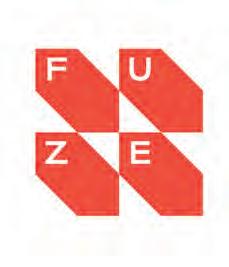
DESIGN AGENCY: ASTERISK
CLIENT: Z MODULAR

DESIGN AGENCY: CREATIVE SPARK
CLIENT: DELIVERY APP
From a design perspective triangular logos can be prickly. Humans are literally born with a natural aversion to sharp objects like thorns and fangs and things that puncture us. Every designer will, at some point, present a client with a triangular solution and be surprised when the client suggests it’s pointy. Three of them in fact. So unexpectedly, this year’s crop of marks are crawling with negative triangles created by removing the same. All a bit counter to logic, but these missing corners serve a secondary purpose that supersedes fear.
Occasionally these chopped corners are removing the offensive points or easing them down. Often they are removed to create dimension to show a receding angle of a 3D object or to help define space by serving as a triangular shadow casting across an illuminated surface. Typography has run rampant with the excising of a corner here or there to build some unique ownership to an otherwise unadorned wordmark. Because of the strong angular effect, marks with solid stroke weights are popular, and these frequently convey a rugged profile associated with manufacturing, industrial, tech and others not afraid to make a point.

DESIGN AGENCY: SYLVAIN
CLIENT: SCHOLAR ROCK

DESIGN AGENCY:
MINALE DESIGN STRATEGY
CLIENT: INSIDERS
DESIGN AGENCY: MAXIM DURBAILOV

CLIENT: TRADE ARIAL

DESIGN AGENCY: RAHAJOE CREATIVA
CLIENT: HERIYAN
Poor ellipses, always living in or as the shadow of a circle. It’s hard to imagine an ellipse without making the rash assumption it’s actually a circle or a cross section of a sphere, tilted in perspective. But for all the subservient perceptions, these elliptic marks are the drivers that give us a vantage point. They create dimension and sequence. They create a spatial quality and become dynamic in a way that a perfect circle can only dream of. And when teamed up, they can help us define action or objectives, critical to telling a brand story.
Often a sequence of these reference the cross sections of an object to help us see an entity from a different point of view or to convey the idea of multiples coming together to create the whole. In the case of Deezer, a music platform, those same ellipses emulate the digital register of a sound equalizer. A series of these ellipses can also be an ideal way to show rotation or a swinging motion as the degree of the ellipse grows or diminishes. Even a single ellipse can conjure a hole or a portal or an orbital path, or anything a circle might be, but presented with some compelling flare and a sense of place.

DESIGN AGENCY: KOTO
CLIENT: DEEZER
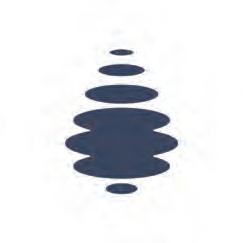
DESIGN AGENCY:
SCORCH DESIGN CO.
CLIENT: DROPLET

DESIGN AGENCY: 01D

CLIENT: DIESEL PUPPET GAMES
DESIGN AGENCY: WILDFIRE CREATIVE STUDIO
CLIENT: COINIUM
Iconic 8-bit pixel art that defined a generation’s visual style has emerged from its three-decade slumber, brimming with renewed energy. During the dawn of digital design, the industry inundated the market with pixelated variations, particularly in logos, to the point where using pixel art for a tech client became frowned upon — a tired cliché and industry punchline. Perhaps time has softened these attitudes because, after all these years, pixel art is making a comeback, embraced by a new generation enthralled with low-fi aesthetics in role-playing games, indie creations, and breathtaking pixel grid artworks. Yet, as with any revival, there’s a fresh twist and a cast of new characters awaiting us.
In its current incarnation, the pixel is often a bit player as opposed to the feature. Wordmarks have found opportunities for inclusion without going full on retro and allowing pixels to blend with traditional type characters. And though old school marks were crafted from a grid of uniform squares, it’s not unusual to see solutions using a range of unit sizes, possibly diminishing or expanding to tell a dynamic brand story.

DESIGN AGENCY: ALWAYS CREATIVE
CLIENT: STUDIO POD

DESIGN AGENCY: TRUST DESIGN SHOP
CLIENT: DAVID NIX ASSOCIATES

DESIGN AGENCY: BRANDFORMA
CLIENT: PERSONAL

DESIGN AGENCY: THE COLLECTED WORKS
CLIENT: LIVEKIT
An overactive conversation in brand circles of late has been focused on the popularity of serif versus sans-serif fonts. Obviously, neither are going anywhere, and there will always be a place for both, but somewhere between the two, that serif foot is going through some real gyrations. Maybe as a consolation to both camps, instead of a highly defined serif foot, designers are embracing for effect a flared leg like a newly stitched pair of bellbottoms. Thicks and thins in a variable line stroke that sweeps out to the most gradual serif that terminates in a really fat trunk. Some have that whiplash signature blended with a bit of the free spirit from a prior nouveau-delic influence.
That common belled base is varied in application for this trend. It adapted itself from overwhelming to understated, which demonstrates just how flexible a singular idea can be. A final comment here is this trend is an artifact of the revival of art nouveau influences in typography over the last several years. While the more dominant signature of that genre is the viney, curvy thicks and thins, the isolation of the flared foot separate from the whipping tendrils is likely where this jail break is headed

DESIGN AGENCY: FOR THE PEOPLE
CLIENT: BLUE MOUNTAINS

DESIGN AGENCY: LANTERN
CLIENT: NORFOLK COAST

DESIGN AGENCY: AVIDITY CREATIVE
CLIENT: GEEM

DESIGN AGENCY: JOHN DORCAS
CLIENT: NATURAL COLLECTION
The over-easing of corners on a logo can conjure a variety of thoughts in the public’s mind, but the words “harsh” and “aggressive" will never be used in those evaluations. Glad to issue a permission slip to let you run in the hallway with these logos. Assuredly, no one’s going to get hurt. The marks in this trend are a collection of parts that have been linked together with a viscous connecting tissue. Marshmallow? Bubble gum? Gak? My point is there are no points, but the logos tell a story of contemporary connection building. Much of this aesthetic is being driven by tools on various platforms that allow for the bridging and radiusing of elements.
This may be one of the least tightly articulated themes in this report, but the one that has the most potential to break the glass on the way we see branding. A distant idea will never be as clear, but it also does not have to fit in the mold of what others are doing. A message that bears repeating in each of these reports is: Do not take any trend and try to create something that follows it. Get ahead of these trends since that’s where tomorrow is. Look at the trajectory of these ideas and then press them out in front of you. And if it seems dark out there, it’s because you’re going to light the trail for your own followers.
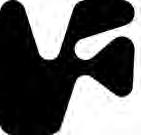

DESIGN AGENCY: ANTI
CLIENT: FORSKNINGSRADET
DESIGN AGENCY: AUDDIA
CLIENT: PERSONAL

DESIGN AGENCY: STUDIO HERRSTROM
CLIENT: STAGE

DESIGN AGENCY: SRDJAN MARJANOVIC-
CLIENT: VIRENRA CHHIKARA - SBDC
An expectation of order is incumbent on designers attempting to clarify an identity. When a perfect circle is digitally created, it is one among billions. But when that same circle is drawn by hand, slightly askew, it begs the question: Why? When a perfect rectangle is drawn and tipped two degrees off kilter, that minute tip sticks out like the long pole in a tent. Imperfection gnaws at the sensibility of consumers. But even in chaos, there is order.
Each of the sticks in these marks are perfectly straight-line segments that if lined up in parallel harmony wouldn’t elicit a second look. But order is found in mayhem, and the attributes of a clever bird and their mastery at feathering a home out of random twigs and flotsam are appreciated as in The Nest, or Ski Austria’s monogram A, stamped into the snow with ski impressions, or the last three of the tastiest French fries ever. The simpler the assembly left askew, the larger the conundrum. Lines could represent an awkward street corner, boundary lines, a celestial constellation, shorthand for a genetic code or chemical compound, or where tracks cross the river. Embracing the occasional chaos of nature and reality can deliver an unmistakable fingerprint of a story.
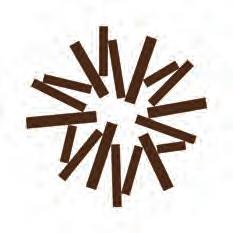
DESIGN AGENCY: STUDIO DAD
CLIENT: TUMBLEWEED

DESIGN AGENCY: SKINN
CLIENT: FRYDATE
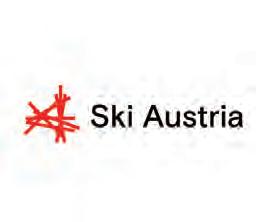
DESIGN AGENCY: SCHOLZ & FRIENDS
CLIENT: SKI AUSTRIA

DESIGN AGENCY: COOPERBILITY
CLIENT: STRENSON
In late 1963, morale plummeted at a Worcester MA insurance firm after a tense merger. Seeking a solution, the firm’s new PR head, Joy Young, approached Harvey Ball Advertising with a sketch: A simple circle with a U-shaped smile intended for buttons. Concerned that some might wear them upside down, Harvey added eyes with two dots from his marker. For a fee of $40, or twenty bucks per eye, Harvey’s work was done. A few billion smiley face buttons, shirts, stickers, baubles later, those two immortal dots resurrect from the graphic graveyard with zeal.
To be clear, this year saw an excess of marks which were first cousins to the trope-typical happy face. More remarkable to this report was the significant number of double dots unescorted by any semblance of a smile. Designers had no compunction about sticking a pair of dots on any shape that would hold still, and in some cases the companion shape was an afterthought or not there at all. It is giving a human quality that is wide eyed and attentive and lets the balance of the logo tell me the rest of the story.

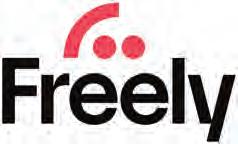
DESIGN AGENCY: 20SOMETHING
CLIENT: TOKEN DOT COM
DESIGN AGENCY: DIXONBAXI
CLIENT: FREELY TV

DESIGN AGENCY: SAINT URBAIN
CLIENT: PANZON
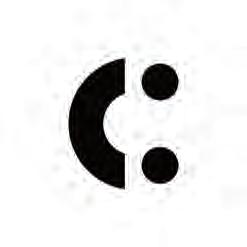
DESIGN AGENCY: BONDIR
CLIENT: CORSO
Saul, at a weight of 231 pounds, officially entered the Guinness Book of World Records a number of years ago, and at last check, the record still holds, but now it’s at 400 pounds plus. The team at Sticker Giant started Saul the sticker ball with a handful of excess stickers a number of years ago, and they’ve continued to lather this enormous ball of diecut sticky sentiments like feeding a binge-crazed champion. This industry has grown so rapidly and is so fragmented; there are very few solid annual production numbers, and the eyes of experts glaze over in attempts to offer metrics beyond speculation of “billions and billions.”
Making the evolutionary jump from stickers to logos seems like a natural jump for a generation using this currency to express opinions, quips, and affinities. Some of these sport shadows or dimensional artifacts, and others merely have that exterior trim zone that we’d see on many sport mascot marks. Badge-style logos fit this trend as well, but tipping the mark randomly out of level and being a bit loose with the application assures you’ll fit in. Crafting an identity based on this premise serves to open discourse for a market already comfortable with expressing themselves without a word being spoken.

DESIGN AGENCY: DRAGON ROUGE
CLIENT: AFTER LIFE

DESIGN AGENCY: ROGUE ANT DESIGN
CLIENT: BACKCOUNTRY WANDERER

DESIGN AGENCY: RICKABAUGH GRAPHICS
CLIENT: MILWAUKEE AREA TECHNICAL COLLEGE
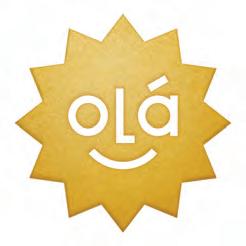
DESIGN AGENCY: RAYMOND BURGER ILLUSTRATION
CLIENT: NORD DENTAL
Picture those early arrows drawn in the caves of Lascaux, or used as a graphic device in Egyptian hieroglyphs, or the ones the Romans carved into stone to direct legions across their empire. Now scrub all of that from your mind and be astonished to discover the first use of an arrow as a graphic symbol didn’t happen until the 18th century. Up until that time we used a pointing finger called a manicule if we wanted to graphically tell someone where to go. Fortunately, the first arrow indicating the flow of a river on a map caught on or we might be pointing out the hidden pointy hand in the FedEx logo.
But despite a two-century head start, this year there have been a torrent of arrows. Ultimately the symbol lost its fletching, the official name for those feathers on the end of it. The shaft has become critical in describing the pathway with an appropriate right turn, left turn or even the occasional hairpin. In many of these, the designer is defining a letterform with the shaft as in the mark for Tangent, a digital user experience leader. Combining a monogram with an upward and forward arrow helps demonstrate trajectory, but if the only message we have is our growth plan, the messaging can feel a bit thin.

DESIGN AGENCY: BEDOW
CLIENT: ATRIUM

DESIGN AGENCY: STUDIO ZUR STRASSEN
CLIENT: KICKBASE

DESIGN AGENCY: PETER SIMPSON CREATIVE
CLIENT: ROCHESTER DOWNTOWN DEVELOPMENT COMMITEE (W/ TRUTH COLLECTIVE)
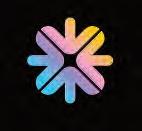
DESIGN AGENCY: JEROEN VAN EERDEN
CLIENT: PERSONAL
There’s something about the asterisk that speaks to my heart. It’s packed with symbolism, it’s flexible, and a quick read which makes it an ideal candidate for logo design. Unfortunately, it has become so ubiquitously utilized that it’s also vying for repeat offender citations. Mimicking a little asterisk karma but layering in its own special sauce are a series of Vs and arrows rotated around a common point. The number of elements vary in these iterations, but they all have a common goal, a focus, a core objective, and any other analogy conjured up in the design brief.
Where an asterisk can become weighty at the center with converging strokes, this solution allows the designer to open up negative space. Carving a wider channel between elements or rounding off arrow points can create a double impact of a symbol inside of a symbol. I’m especially drawn to the design for Atrium by Bedow. By rotating the top of the letter A in Atrium They have created the square atrium central to the client’s architecture which is further enhanced by an animation on the client’s site.

DESIGN AGENCY: TANGENT
CLIENT: PERSONAL

DESIGN AGENCY: FOXDUCK CLIENT:KEYSET
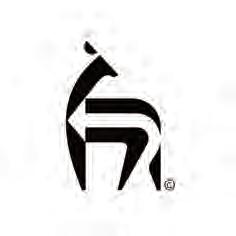
DESIGN AGENCY: MYKOLA STRILETC
CLIENT: PERSONAL

DESIGN AGENCY: DAAKE
Balance is a fundamental design skill, and in this trend set, the marks look like a team of acrobats contorting into the most delicate arrangements. They're solid but teetering just enough to make anyone but a Jenga aficionado hold their breath. If these were a set of blocks there is always a keystone that will drop the tower when extracted and one other element that manages to defy gravity. The negative area on these logos carve out very angular counters with enough weight that they read equally well positive or reversed out of a field.
There’s a sturdy weight to these logos that firmly parks them in the durable stall. It's this heft that makes them work, quashing any fears that the companies they represent are fragile. Fans of fat marks rejoice at this resurgence of strength. Take note of the blend of curvilinear and non-curvilinear geometry, like in the Webflow mark. This mix of hard and soft elements showcases a collaborative essence of grace and skill, all while defying gravity. It’s a handsome solution that displays just enough vulnerability to keep it from appearing too full of itself.
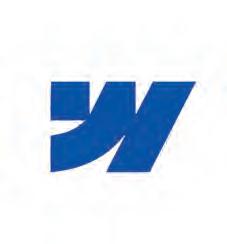
CLIENT: AVERTA DESIGN AGENCY:
PORTIO



DESIGN AGENCY: FOR DIFFERENT CLIENT: ATLAS
“Passages” is the chosen name for this trend because many of the logos look like you could actually tunnel in or journey through them. But let's not get too philosophical here. It’s obvious that a journey isn’t always about distance. Some of these logos might symbolize a journey through time, culture, stories, music, or even a mental trip — yours or someone else’s. The diversity of these marks highlights the inventive nature of fellow designers. Each story told with these is determined by the external shape. A star, a keyhole, a letterform or an arched doorway each set the stage for the journey.
Typically these logos are constructed using line or solid fields of graduating color with a reductive concentric progression that signifies passage. A clue to the passage whether an exit to the mark is evident. There is often an aperture at the distant end, but the passage may be upward bound or a twisting and turning tumble to an unknown outcome. So, the real question is: Are you coming or going through that portal, or are you just standing there, pretending to be deep?

DESIGN AGENCY: YORGO&CO.
CLIENT: L’ARCHE
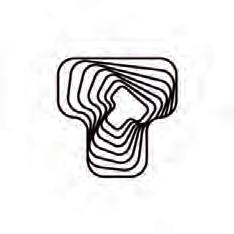
DESIGN AGENCY: STANISLAV
CLIENT: TELEPORT SYSTEM
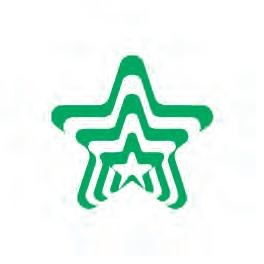
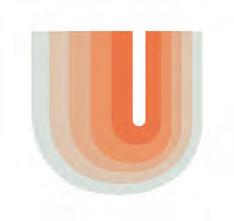
DESIGN AGENCY: KHAIRUL ISLAM
CLIENT: PERSONAL
DESIGN AGENCY: ATLAS MINOR DESIGN STUDIO
CLIENT: UNDIVIDED
Looking for the influence of any trend in this report can take you on an unexpected journey. Studying this gradual rotation gradient that is appearing as a new way of indicating motion or change, it brings to mind the sweeping arm of a radar and the latent path that trails it on a display screen. No good submarine movie would ever leave out the sonar blip on the audio track or the drama of the arm dialing around to show an incoming torpedo. Maybe these marks are a designer’s desire to bank on that drama or maybe this is just a fresh take on introducing a nuance to gradient fields.
Dark to light transitions help to demonstrate a passage of time or space. They build a sense of dimension and identify a light source. They display motion while remaining static or certainly open the possibility of animation for part of a brand story. Note the importance of the hard dividing line with the spatial appearance of a wall rising up from the mark. Gradients still carry limitations, but for the client that lives primarily in a digital environment they have become the signal of a brand not held back by the constraints of mortal design.
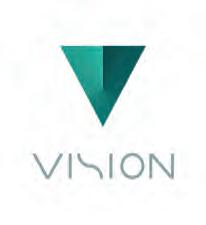
DESIGN AGENCY: MODE
CLIENT: LOWE’S

DESIGN AGENCY: VADIM
PERSONAL


DESIGN AGENCY: BRANDFORMA
CLIENT: PERSONAL
We are on the brink of a new era of symbolic language, scrambling to develop visual signs for communication. Stars, chips, circuitry — these all have an immediate fringe connection to AI technology, giving them a foothold, but they still rely on legacy symbolism. A bit reminiscent of a few years prior when designers were scrambling to attach symbols to blockchain and cryptocurrency. The real challenge is finding symbols derived from the technology’s outcome. In short, the AI symbol game is still in play.
The leading contender is the four-pointed star, commonly known as a “dazzle.” This trend was first noted several years ago, even before AI became mainstream. Stars hint at a magical or mystical quality, a shorthand for, “Trust us, you wouldn’t get it if we explained.” The use of a trio of stars seems to be gaining traction both as an interface icon and in logos, but the dazzle star has yet to settle into a final form. That little four-pointed star is also a shape in flux as demonstrated by the logos included here. AI may need to wrestle to take majority ownership. Currently it’s in service with a myriad of meanings and on track to be the designer’s building block of the decade.

DESIGN AGENCY: DESIGN ETIQUETTE
CLIENT: SCHEDULE SCOUT

DESIGN AGENCY: JON KAY DESIGN
CLIENT: SYSTEM ERA SOFTWORKS

DESIGN AGENCY: SCORCH DESIGN CO.
CLIENT: LITTLE SPROUTS

Thousands of designers use LogoLounge every day as a Gallery, Portfolio, Network, and Source of Inspiration. LogoLounge members gain access to better than 400,000 exceptional logos from which to find inspiration. They’re contextualized and searchable, making it easier to find a path that leads to your next design destination. Learn more at logolounge.com/join

Our 24th American Digital Design Awards™ saw a record-breaking number of entries, and here is a select showcase of winners. The contest formerly known as ‘Web Design’ was expanded this year to better amplify the power of design excellence to enhance online and interactive experiences — for websites and microsites, yes, but also social media campaigns, email marketing, digital advertising, e-publications, apps, animation, video, 3D and more. Winners are displayed in alphabetical order by Design Firm or Organization primarily responsible for the design.
1HQ Brand Agency
1440 Media/August Moon
5 by 5 Design
80east Design
A Great Idea
AARP Brand Creative Services
Academy of Art University
Alamini Creative Group LLC
Alana Graphics/Paige Alana
Alight Solutions
Alloy Digital
Alyssa Ray Design
American Geophysical Union
Anda Creative
Azibo
Bailey Brand Consulting
Bank of America Enterprise Creative
Solutions
BERNINA of America
BFM Group Inc.
Big Idea Advertising
BTC Marketing
Caliber Group
Central Garden & Pet
CF Napa Brand Design
Christiansen Creative
Ciampa Creative
Cohesity
CSB (Cornerstone Strategic Branding)
DailyMail.com/Jinha Kang
Dave Wang Design
DËBRAIN LLC + Cox Ideabar
Decker Design, Inc.
EH Design Works
Everest Ice and Water Systems
First Ascent Design
Fluke Corporation
FORMA by MOYA
Fors Marsh
Freaner Creative
Futura Dept
GAF
Gauger + Associates
General Mills, Inc.
Google YouTube Music Design Team
High Level Marketing
Hui-yu (May) Ho
Ideas On Purpose
Jacksonville State University
James Grady and Clay Hopper
Jenn Stucker Design
Jiaheng Wu Design
Jingyang Shi
JMS Marketing
Junjie Yin
Keenan
Kennesaw State University
KUDOS Design Collaboratory
Lasell University
Laura Becker
Leibowitz
Lentini Design & Marketing, Inc.
Lewis Communications
LION AGENCY
Manual Labor Studio
MAUGEDESIGN, LLC
MD Anderson Cancer Center
ME Design Studio
Meng Lan
Milwaukee Bucks
Minds on Design Lab
Miskowski Design LLC
Notion LLC
Oomph Inc
Pennsylvania School Boards Association
Perforce Software
Performance Foodservice
QM Design Group
Rad Source Technologies
RAS Communications
Ratkaj Designs
Rogue Penguin Ltd
RUNWAY
Saga Education
SCAD - Savannah College of Art & Design
School of Visual Arts, Design BFA
Seafoam Media
Sessions College For Professional Design
Shannon Charvat
SOVRN
Spohn Design
Steers Studios
Street Level Studio
Studio 165+
SVA Masters in Branding
Swimmer Integrated Marketing
The Creative Pack
The Grove Creative
The Indelible
The Walker Group
The Word & Brown Companies
Throughline, Inc.
TreacyDesign/TFX
Triad Brand Marketing
Two Designers Walk Into a Bar
University of Cincinnati Campus
Services
University of Pittsburgh Health Sciences
View Source
Visible Logic
We The Cool Studios
West 7th Design Studio
Xiuzhe (Maggie) Lang
Yendo
Yimeng Sun
Ziwan Li


Thomas






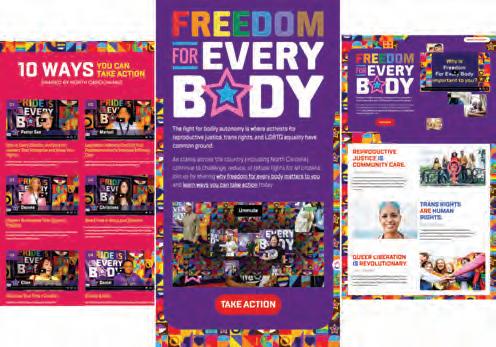


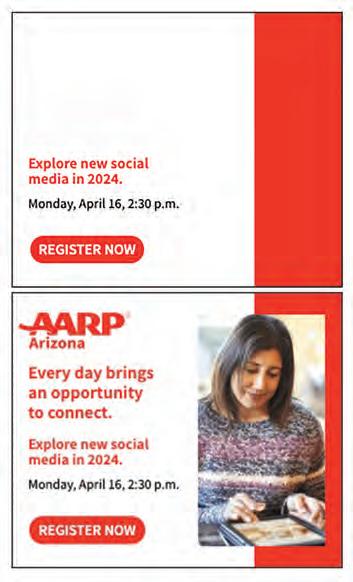
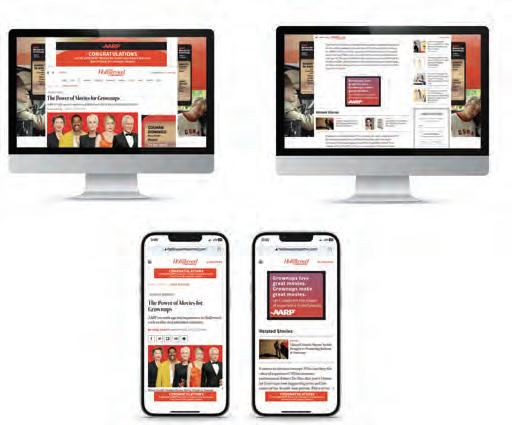





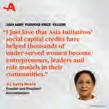
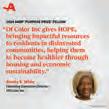



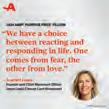
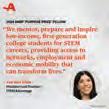










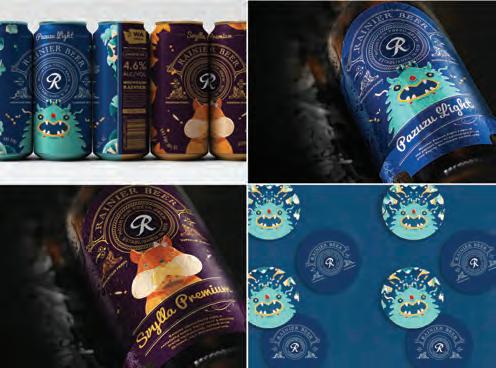
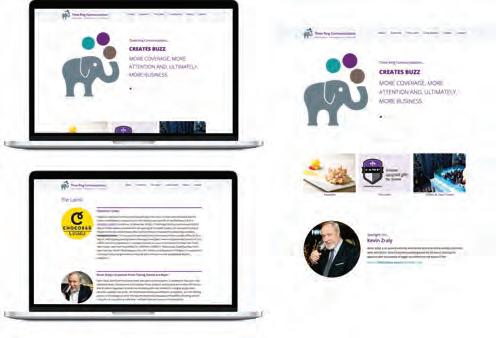
Design School: Academy of Art University Title: Rainier Beer Packaging
Alamini
Group LLC
Ring Communications




Design Firm: Alight Solutions Client: Hewlett Packard Enterprise (HPE) Title: Condition Management Toolkits Creative Director: Cristine Giannotti Art Director: Romeo Van Buiten Designer: Romeo Van Buiten Additional Contributors: Stephanie Hall, Teri Burt, Audra Davison, Laura DeSanto Wagner, Christin Moorehead, Julie Norman, Tasha O’Berski, Ellen Rech, Cathleen Tuttle

Design Firm: Alight Solutions Client: PepsiCo Title: Recruitment Video Creative Director: Cristine Giannotti Art Director: Michael Spencer Michael Spencer Developer: Michael Spencer Writers: Kevin Clapp, Chelsea Rollins Client Lead: Cathleen Tuttle Production Editor: Randall Van Vynckt Project Manager: Kristin Peacock
Design Firm: Alight Solutions Client: Evercore Title: Evercore Benefits Website Creative Director: Jeannette Prestia Developer: Dan Tosto Writer: Angela Santos Project Manager: Kymm Brown Proofreader: Lisa Wagner

Design Firm: Alloy Digital Client: Solairus Aviation Title: Solairus Owner’s App UX Designer: Sean Walsh Contract UX Designer: Lisa Clark Account Manager/Project Manager: Lauren Wyatt Technical Director: Andrew Parsons Contract Software Engineer: Jonathan Madison QA Engineer: Luis Marquez Data Engineer: Alex Destino Videographer: Tucker Hess Productions




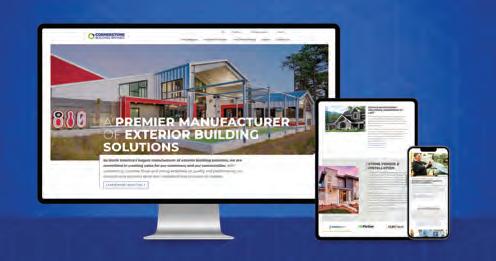




Firm: Bank of America Enterprise Creative Solutions Title: Diversity, Equity and Inclusion In The Investment Management Industry Social Post Creative Director: Debbie Warburton Creative Director: Kara Schemmel Art Director: Jessina John Executive Director: Charissa Messer Group Creative Director: Ken Berl Client: Nicole Atterberry


Firm: Bank of America Enterprise Creative Solutions Title: Small Business Debit Email Creative Director: Steve Strohm Developer: Mark Lazur Executive Director: Charissa Messer Account Director: Doug Reppa Group Account Director & Digital Strategy: Stacy Stigelman Client: Lisa Price

Executive Director: Charissa Messer Client: Kyle Jordan

Design Firm: Bank of America Enterprise Creative Solutions Title: Preferred Rewards Engagement Travel Email Creative Director: Ken Tattersall Art Director: Judy Frezza Developer: Mark Lazur Writer: Richard Schneider Account Supervisor: Jen Murphy Email Product Owner: Dianne Dalton Senior Art Buying: Kristen Kramedas Group Account Director & Digital Strategy: Stacy Stigelman Executive Director: Charissa Messer Client: Sarah Sawdon

Design Firm: Bank of America Enterprise Creative Solutions Title: Builder Division Microsite Creative Director: Ken Tattersall Senior Art Buying Lead: Kristen Kramedas Account Director: Patty Heck Group Acount Director & Digital Strategy: Stacy Stigelman Executive Director: Charissa Messer Client: Lori Gosewisch


Design Firm: Bank of America Enterprise Creative Solutions Title: Preferred Rewards Engagement Digital Advertising Creative Director: Ken Tattersall Art Director: Kelvin Valencia Designer: Jeff Burt Segment & Channel Strategy: Beth Brownholtz Senior Art Buying Lead: Kristen Kramedas Account Director: Karen Sterkenburg Group Account Director & Digital Strategy: Stacy Stigelman Executive Director: Charissa Messer Client: Sarah Sawdon
Design Firm: Bank of America Enterprise Creative Solutions Title: What’s Up With Joe? 401K Enrollment Video Creative Director: Debbie Warburton Creative Director: Kara Schemmel Art Director: Kieron Sebastian Writer: Ann Canning Account Executive: Kristina Wiley Account Director: Kara Foley Art Buying Lead: Priscilla Person Group Creative Director: Ken Berl Executive Director: Charissa Messer Client: Larry Borero

Design Firm: Bank of America Enterprise Creative Solutions Title: Bank of America Customized Cash $200 Bonus Offer Email Creative Director: Steve Strohm Art Director: Judy Frezza Developer: Mark Lazur Programmer: Angela Gatangi Writer: Kris Stone Account Supervisor: Charles Flicker Email Product Owner: Dianne Dalton Group Account Director & Digital Strategy: Stacy Stigelman Executive Director: Charissa Messer Client: Amy Grubb
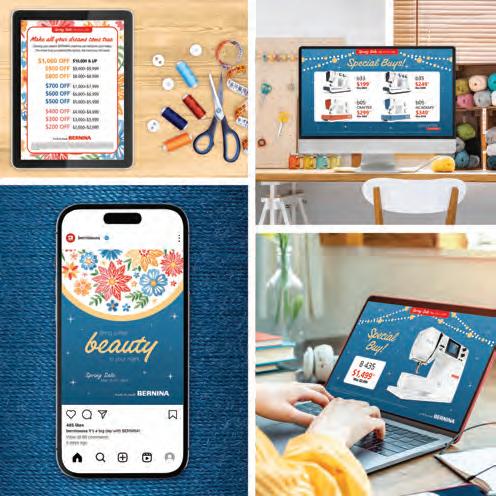
VP















Design Firm: Ciampa Creative LLC Client: Camp Harbor View Title: 2022 Annual Report Microsite Design Creative Director: Renessa Ciampa Designer: Amelia Oon Developer: Pathfinder Studios Writer: Maggie Evans Project Manager: Nina Earley

Design Firm: Cohesity Title: Cohesity Gaia Virtual Event Platform Creative Director: Janmarie Wright Art Director: Tonya Zenin Designers: Shianne Zimmerman, Emily Morrow Writer: Jackie Sandoval Project Manager: Katie O’Brien Event Management: Andrea Watkins, Ruby Wang Product Managers: Marc Mombourquette, Megan LaFlamme Social Media: Lisa Marcyes, Hannah Inman Web: Cheryl Marquez, Alice Vickers




Design Firm: Cohesity and Bright Blue Day Client: Cohesity Title: AWS Re:Invent Out of Home Media Art Director: Tonya Zenin Designer: Tonya Zenin Writer: Jackie Sandoval Project Manager: Katie O’Brien Design Agency: Bright Blue Day

Design Firm: Cohesity and Signal Factory Client: Cohesity Title: Cohesity Gaia Video Creative Director: Janmarie Wright Art Director: Tonya Zenin Designer: Tonya Zenin Writers: Jackie Sandoval, Cheryl Sternman Rule Engineeering: Greg Statton Product Management: Marc Mombourquette, Jared Ruckle Design Agency: Signal Factory

Firm: DailyMail.com/Jinha









Design Firm: Fluke Global Brand & Communications Creative Studio Client: Fluke
Reliability Title: eMaint Web Site Art Director: Sharon Dye Designer: Sharon Dye Developer: Hau Huynh Writer: Richard Freeland

Design Firm: FORMA by MOYA Client: Moya Design Partners Title: MOYA’s Six Year Anniversary Video Creative Director: Paola Moya Art Director: Laura Moya Designer: Florencia Branchicella Writers: Paola Moya, Laura Moya
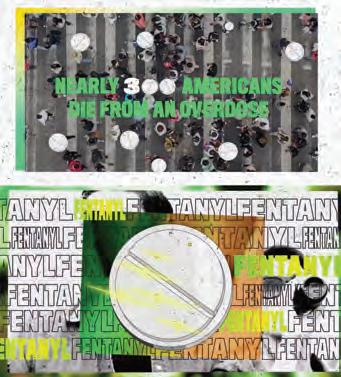
Design Firm: Fors Marsh Client: National Center for Injury Prevention and Control Title: Polysubstance PSAs Executive Creative Director: Eduardo Sarmiento
Creative Director: Aerien Mull, Associate Creative Director: Colin Barnes Design Lead: Bianca Paulk Art Director: Jill Responte Designer: Sasha Kovalenko
Copywriter: Matt Namey Production Lead: Bronie Brunet Account Executives: Chad Villareal, Petalia Johnson Production Company: Castaño Group Director: Kedgar Volta Music: Memory is a Game DOP Senior Communications Specialist: Brittany Curtis DOP Communication Deputy Branch Chief: Valerie Daniel

Design Firm: Fors Marsh Client: Counter Narrative Project Title: Ridiculous Laws Social Media Executive Creative Director: Eduardo Sarmiento Creative Director: Aerien Mull Design Lead: Bianca Paulk Art Director: Dani Simmons


Design Firm: Fors Marsh Title: Fors Marsh Seasons of Wonder Holiday Email Chief Creative Officer: Russell Hayer Executive Creative Director: Eduardo Sarmiento Creative Director: Aerien Mull Associate Creative Director: Colin Barnes Design Lead: Bianca Paulk Senior Art Director: Melissa Pierce Art Director: Dani Simmons Art Director: Emily Spitler

Design Firm: Fors Marsh Client: ANAMAR Environmental Consulting Title: ANAMAR Website Design Lead: Bianca Paulk Senior Art Director: Melissa Pierce Senior Art Director: Sue Raaz Art Director: Drea Olivera Lead Developer: Mike Haefeli Senior UX Design/Developer: Bruce Cooke Copywriter: Matt Namey

Creative Director: Ariel
Art
Dye

5317
Design Firm: Freaner Creative Client: County of San Diego Land Use & Environment, Donna Durckel Title: 2023-2024 Budget Infographics Website Creative Director: Ariel Freaner Art Director: Ariel Freaner Designer: Ariel Freaner Writer: Donna Durckel
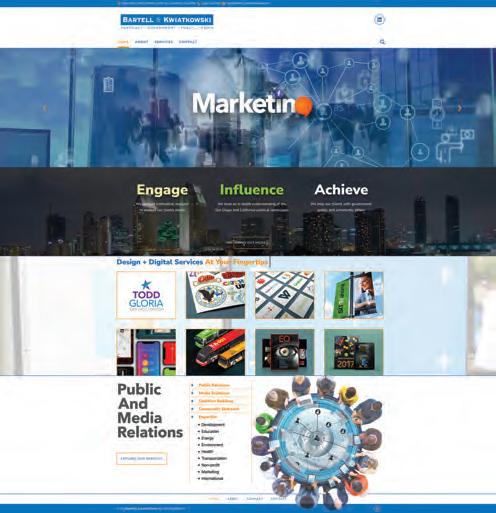
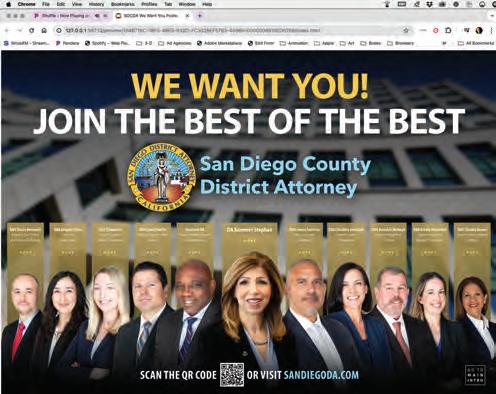
Design Firm: Freaner Creative Client: San Diego County District Attorney, Steve Walker, Barbara Medina Title: We Want You! Recruitment Microsite Art Director: Ariel Freaner Designer: Ariel Freaner Developer: Ariel Freaner Programmer: Ariel Freaner
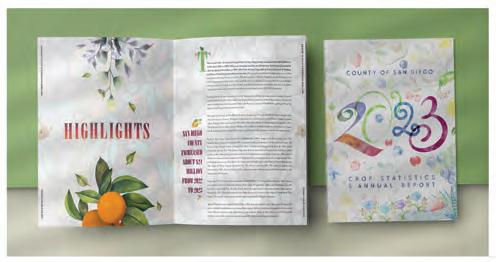








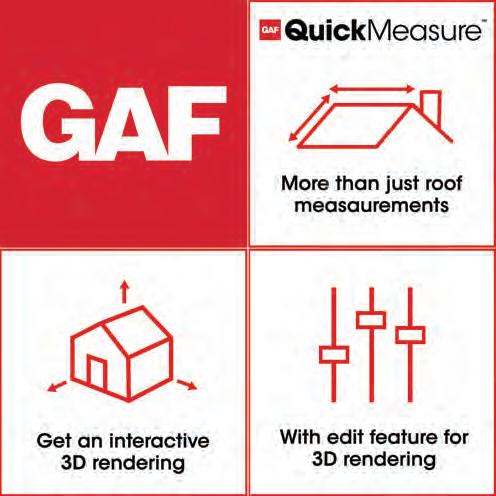

Design Firm: GAF Media and Email Marketing Client: GAF Title: Business Services GIF Advertisement Designer: Jenna MacNeill Writer: Karen Goulart Project Manager: Alison Dahlhaus Integrated Marketing Manager: Alison Dahlhaus Product Managers: Shari Tourmey, Gretchen Scheufele, Vishal Laddha Managers: Shari Tourmey, Gretchen Scheufele, Vishal Laddha




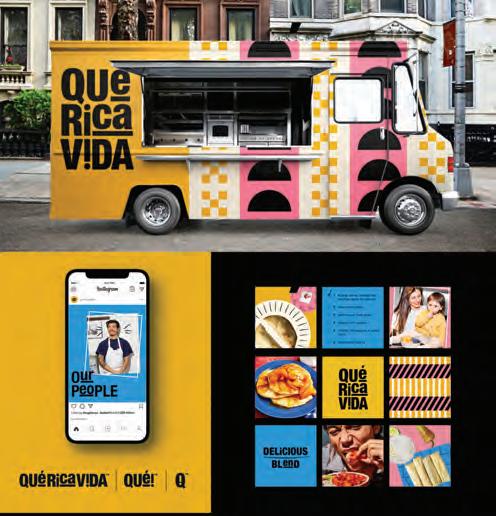



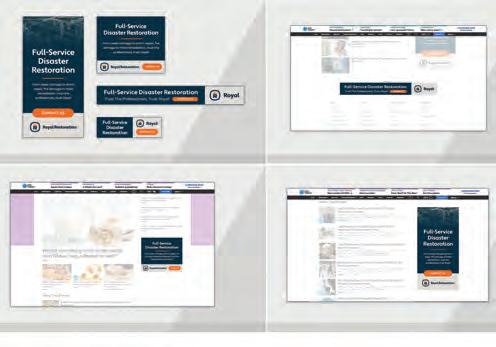
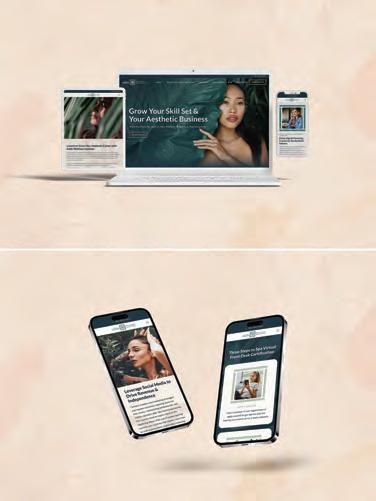

Design Firm: High Level Marketing Client: FreeHeatPump.com Title: FreeHeatPump Website Creative Director: Courtney Holt Designer: Maribeth Thomas Writer: Cheyenne Sawaya Lead Project Manager: Rachel Mahan
Quality Assurance Associate: Jessica Seale Director of Project Management: Lindsey Cochran Head of Website Development and Support: Steve Sartino


Design Firm: High Level Marketing Client: Red Rock Realty Group Title: Red Rock Realty Group Website Creative Director: Courtney Holt Designer: Bailey Scott Writer: Erica Soroka Designer: Ally Fiets Project Manager: Lauren Merian
Quality Assurance: Jessica Seale Director of Project Management: Lindsey Cochran Head of Website Development and Support: Steve Sartino

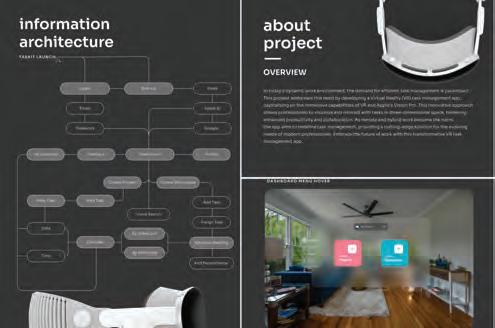


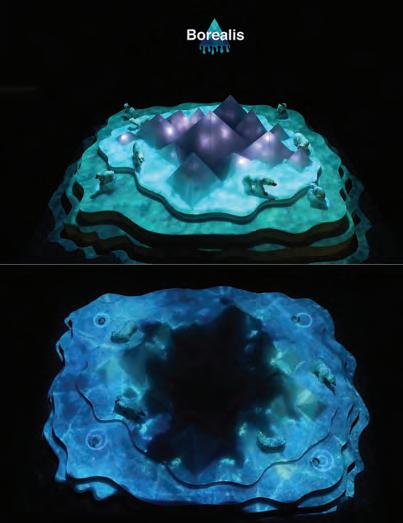

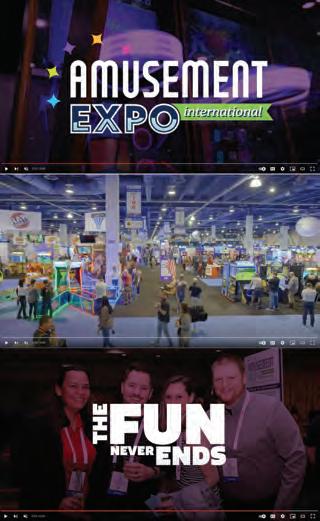



School: Kennesaw State
Title:
House Kiosk & Phone App Design Creative Director: Baileigh Krause Art Director: Baileigh Krause Designer: Baileigh Krause Associate Professor of Graphic Communications: Kristine Kim
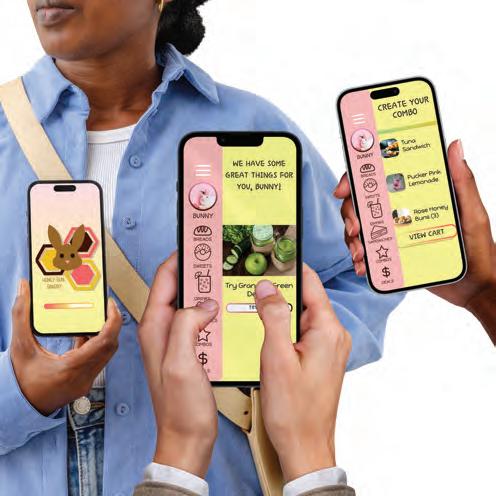
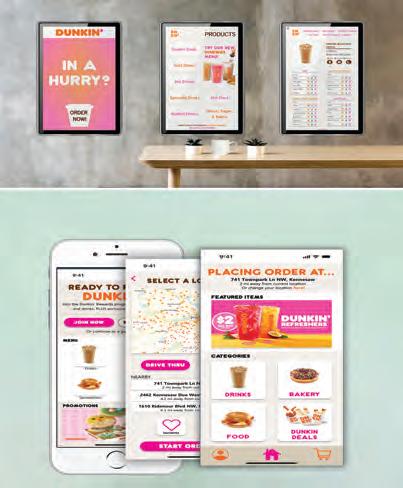
App Design Creative
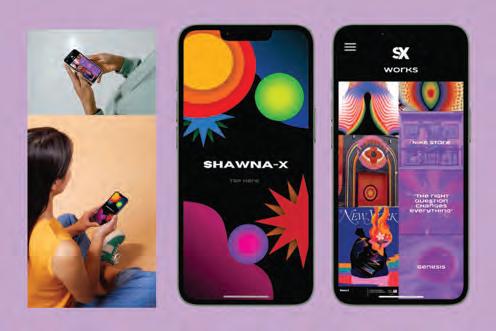








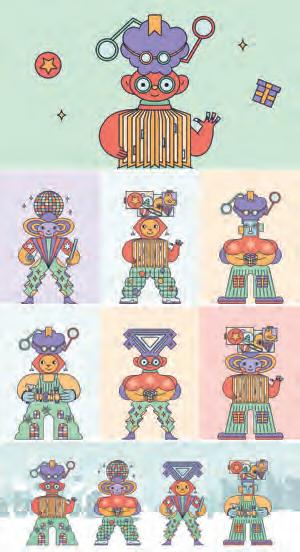
Design Firm: Leibowitz Title: Leibowitz Holiday Email Creative Director: Ivan Caro Art Director: Yichan Wang Designer: Yinan Chen Developer: Jon-Michael Cubano Programmer: Olena Radiuk Writer: Ally Jago Account Manager: Kelly Orosz Visual Designer: Maddie Coyte Producer: John Staton


Design Firm: Leibowitz Client: Tweedy, Brown Title: Tweedy, Brown Website Design Creative Director: Jason Wheeler, Ivan Caro Art Director: Yichan Wang Designer: Sangmi Lim Developer: Olena Radiuk Writers: Kim Danyluk, Kevin Windorf Executive Creative Director: Paul Leibowitz Account Manager: Debbie Haber

Design Firm: Lewis Communications Client: Abeka Title: Abeka
Down' Interactive Blog Creative Director: Deanna Chisholm Designer: Rachel Carney Developer: Brooke Nemchak Writer: Kristen Erickson


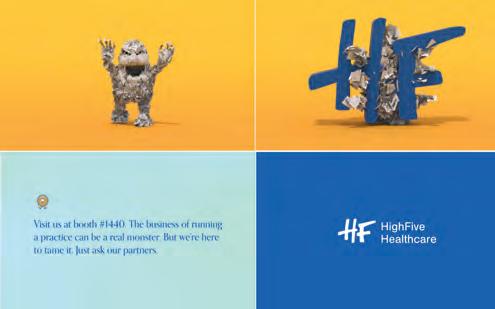


Design Firm: LION AGENCY Client: Bizbrain Technologies Title: Bizbrain Corporate Campaign Creative Director: Adrian Novello Art Director: Andrea Cancian Designer: Andrea Cancian Writer: Jose Batalla

Design Firm: Manual Labor Studio Client: Grand Central Terminal Title: Delivering Everyday Grand Creative Director: Samantha Choi Cadley Art Director: Kjersti Jorgenson Designer: Kayla Park Developer: Anddy Ferreira Marketing Partner: Sound Color Story Marketing Partner: MTA


MD





Design Firm: Miskowski Design LLC Client: Pearson Studios Title: Pearson
Studios Website Design Creative Director: Justin Miskowski Designers: Justin Miskowski, Jess Spataro
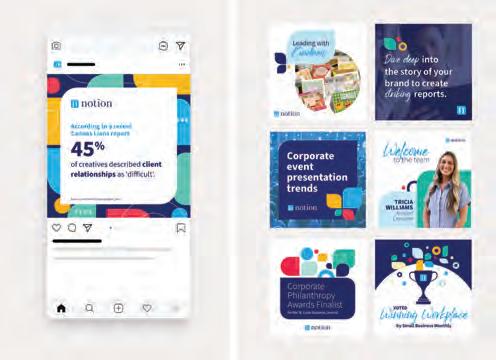
Design Firm: Notion LLC Client: Notion Title: Expertise, Culture and People
Social Media Creative Director: Stephanie Ely Art Director: Emily Nenninger Designer: Janet Tran Writers: Luke Carroll, Isabella Schoonover Content Strategy: Ruko Senseney Account Executive: Tricia Williams



Design Firm: Oomph, Inc. Client: Mass Legal Help (MLH) | The Massachusetts Legal Assistance Corporation (MLAC) Title: Mass Legal Help Website Redesign UI Designer & UX Researcher: Alyssa Varsanyi UX Architect: Ashley Estes Director of Design & User Experience: J. Hogue Project Manager: Jack Hartman

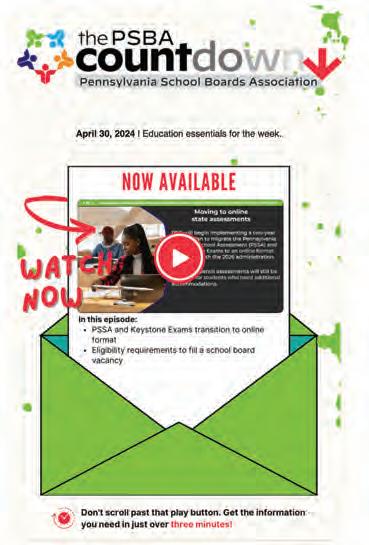
Firm: Pennsylvania School Boards Association Marketing & Communications Team Client: Pennsylvania School Boards Association Title: The Countdown Newsletter
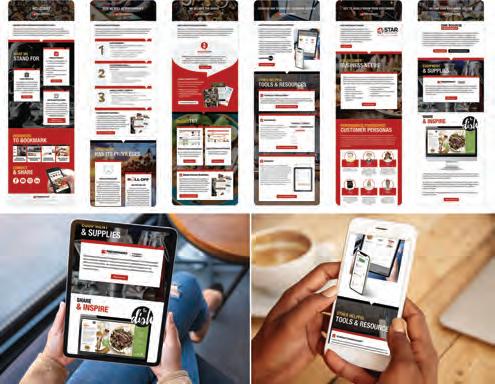


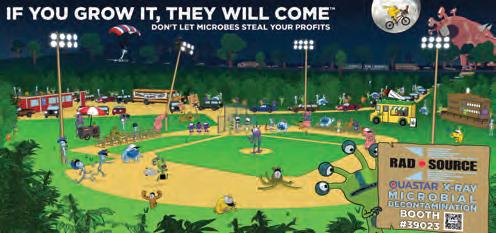


Design Firm: RAS Communications Client: PlayThinks Title: PlayThinks.org Website Redesigns Creative Director: Russell A. Schultz Intern: Brianna Wielebnicki
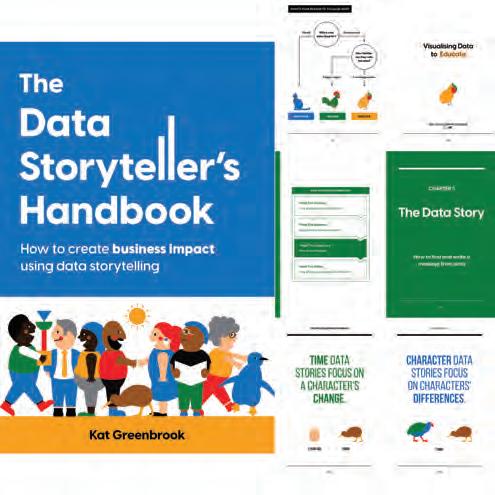
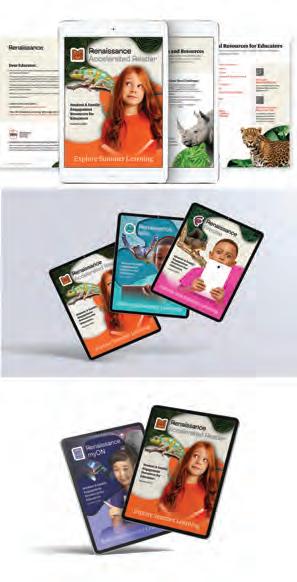
Client:
Student & Family Engagement



Design Firm: Saga Education Title: Saga Change the Equation Motion Graphic
Creative Director: Rob Adams Writer: Jeannie Smith Senior
Designer/Typographer: Nathaniel West Director, Product Marketing C. Nikole Saulsberry Photographer: Joan Ford



Design School: School of Visual Arts, Design BFA Title: Forbes Magazine for Pigment & Color UI/UX Creative Director: Dong Hyun Kim Art Director: Dong Hyun Kim Designer: Dong Hyun Kim Developer: Dong Hyun Kim Programmer: Dong Hyun Kim Writer: Dong Hyun Kim Instructors: Livia Ito, Chatdalin Sinthorn, Eric Baker

Director: Zane Vella Designer: Patricio Sarzosa Curator: Lauren Hernandez Students: Thomas Outman, Catherine Spurgeon, Patience Mosbrucker, Tara Fletcher-Gibbs, Alejandra Quesada, Thomas Wilson, Prince Maduekwe, Lance Whitford, Kurt Balcom, Alexander Fitzgerald, Thomas Newhall, Marcus Wilkerson, Phyllis Lavoy, William Flowers, Karen Sorano, Kristin



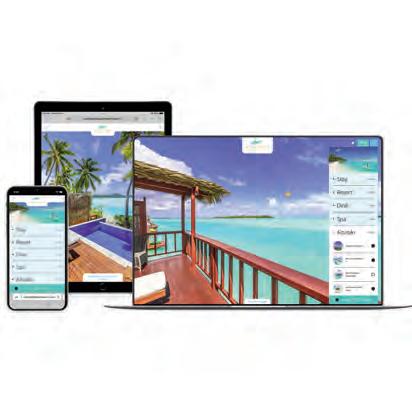


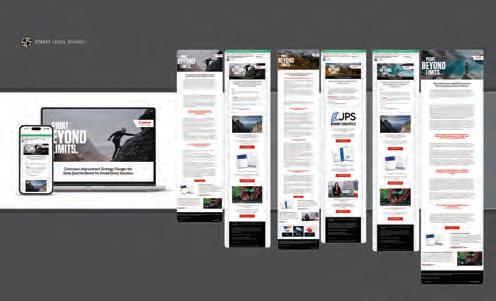

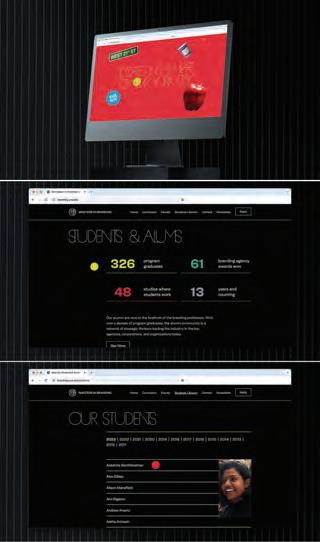




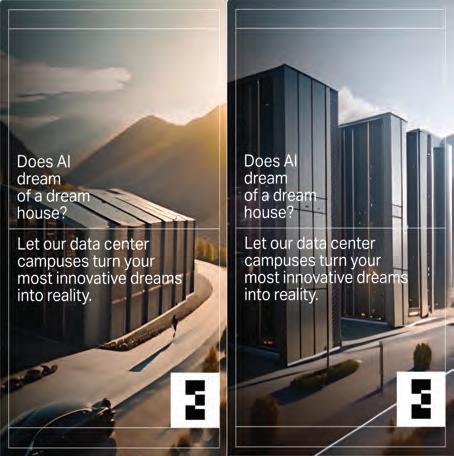


Developers:
Mansfield







Design Firm: The Word & Brown Companies Client: CHOICE Administrators
Title: CHOICE Chats Podcast Content Creators: David McClintock, VP, Sales, Joseph Hernandez, VP Acct. Mgmt., Bryan Coppin, Field Sales Mgr., Kristen Berthiaume Dir., Bus. Dev.
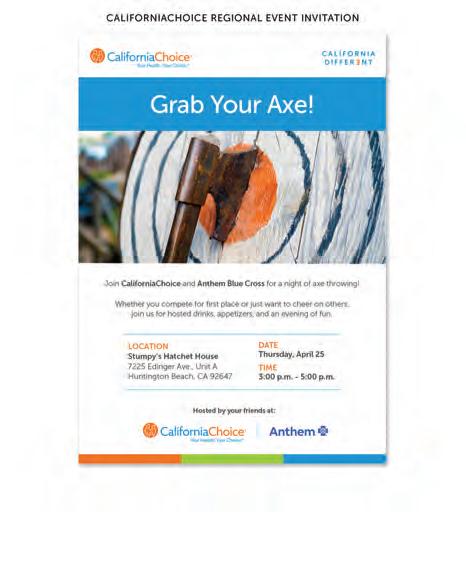

Design Firm: The Word & Brown Companies Client: Word & Brown General Agency Title: ‘Welcome to Paradise’ Top Producer 2024 Event Microsite Creative Director: Polly Neves, Executive Vice President Art Director: Missy Bynon, Marketing Director, Jessica Haluck, Events Marketing Director Designer: Hugo Miramontes, Senior Graphic Designer Developer: Jarrell Walker, Sr. FrontEnd Developer, Vidah Quirante, Digital Marketing Manager, Kalup Alexander, Digital Mktg. Director Marketing Project Manager: Heather Jung Events Manager: ToniMarie Munoz
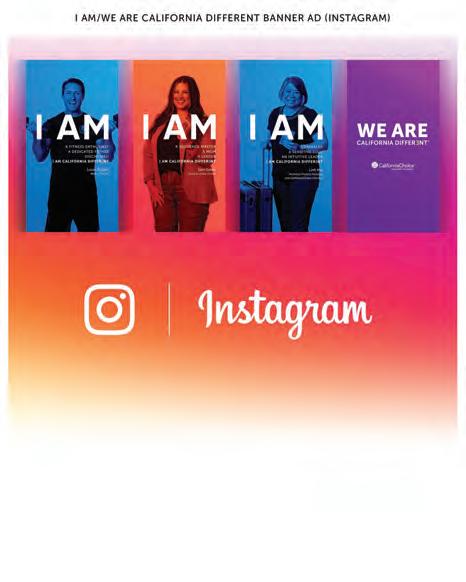

Design Firm: The Word & Brown Companies Client: The Word & Brown Companies Title: HeyHealthInsurance.com Website Creative Director: Polly Neves, Executive Vice President, Kalup Alexander, Digital Marketing Director Art Director: Missy Bynon, Marketing Director Designer: Hugo Miramontes, Senior Graphic Designer Developer: Raborn Writer: Alex Strautman, Senior Copywriter Marketing Project Manager: Heather Jung Digital Marketing Manger: Vidah Quirante




Design Firm: TreacyDesign/TFX Client: Treacyfaces.com Title: Treacyfaces
Eclipses Everything Creative Director: Joe Treacy Art Director: Joe Treacy Designer: Joe Treacy Developer: Joe Treacy Programmer: Joe Treacy Writer: Joe Treacy



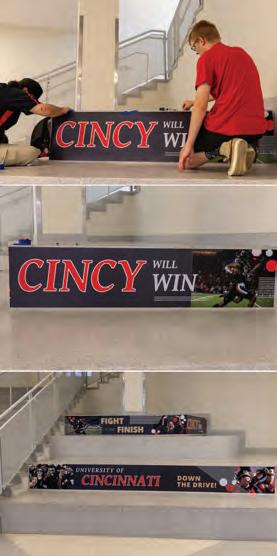









By Lucy Marino

It’s Monday morning. You start your day eager to inspire your design team. But instead of buzzing energy, you sense weariness and a lack of enthusiasm that suggests the creative well might be running dry.
Sound familiar? You’re not alone. A Robert Half survey found that over half (52%) of marketing and creative professionals are burned out at work. As a leader, you know this isn’t sustainable, and you need to amp up your team’s creative vigor and overall job satisfaction.
Here are six ways to overcome the negative forces sapping their motivation and build a work environment that inspires innovation and engagement.
The first step to reinvigorating your team’s creativity is to pinpoint what’s stifling it in the first place. In the survey, 60% of creative professionals blamed a lack of communication and support from management for their burnout, while 56% pointed to crushing workloads caused by understaffing.
To tackle these problems, prioritize open communica-
tion. Encourage employees to share concerns, challenges and ideas for a better work environment. Check in with individuals regularly to see how they're managing their workload, offering support as needed. An anonymous survey might provide even more honest insights into what's causing stress and blocking creativity.
Once you understand the problems, work with your team to find solutions. This might mean re-evaluating deadlines, shifting responsibilities or making a solid case to upper management for more resources.
One of the most powerful ways to combat burnout is to offer your team flexibility in when and where they work. That’s why 94% of marketing and creative managers are allowing or planning to allow their employees to work flexible hours.
The benefits are undeniable. Giving employees more control over their day empowers them to work when they're at their best. This leads to improved work-life balance, lower stress levels and a surge in overall job satisfaction — all of which translate to better creative output.
(continued)
Lucy Marino is executive director of the marketing and creative practice at global talent solutions firm Robert Half, which connects employers with skilled marketing, creative, digital, advertising and public relations professionals to meet their specialized recruiting needs. Marino manages strategy and operations for the company’s marketing and creative talent solutions teams across U.S. locations.

Flexible work arrangements go beyond just remote or hybrid schedules. Other options include:
● Focus Fridays — Dedicate one day a week (like a Friday) for individual work with minimal meetings. This uninterrupted time allows workers to give complex creative projects their full attention.
● Asynchronous Communication — This simply means communicating in a way where you don't expect an immediate answer (think email or messages in Slack or Teams). It's perfect for non-urgent tasks, letting people respond when it suits their schedule and preventing unnecessary distractions
● Compressed Workweeks — How about giving your team the option to work extended hours over fewer days? This can give them extra-long weekends, which are ideal for recharging their batteries.
Brainstorming is the lifeblood of any creative team, but sometimes these sessions fizzle out, leaving everyone deflated. To get those ideas flowing, try these strategies:
● Set A Clear Target. Begin every session with a defined goal. This keeps everyone focused and helps ensure you're working toward a tangible outcome.
● Create A No Judgment Zone. Promote an atmosphere where every idea is welcome, no matter how unexpected. This builds trust and encourages risk-taking, which is essential for creative breakthroughs.
● Get Hands-On. Make it interactive. Use role-playing, sketching or quick prototypes to keep people engaged. Small groups also boost participation and prevent anyone from feeling overlooked.
Recognition is essential for keeping your team loyal and fired up. Make appreciation a habit, offering everything from a quick thank-you to praise in meetings or even formal awards and bonuses. The key is to get specific — highlight the skills, ideas or behaviors that made a difference. And don't forget to celebrate those big project wins together — recognizing team successes builds a sense of shared achievement and reminds everyone that they're part of something special.
Investing in your team's professional development is not only a smart retention strategy (95% of marketing and creative managers are currently expanding their professional development offerings), but it's also a powerful way to foster creativity and innovation.
Tailored training is vital. Offer workshops on the latest design software, creative techniques or even leadership skills. Encourage attendance at industry events where employees can network, discover trends and come back bursting with ideas. And if you want to commit to making professional development a team value, try offering mentorship opportunities for people to learn from each other.
Finally, lead by example. By prioritizing your own professional development and sharing what you learn with your team, you'll demonstrate your commitment to growth and potentially inspire others to follow suit.
Working outside their usual roles gives team members exciting challenges and pushes them to apply their skills in new and unexpected ways. Here's how to make it happen:
● Start Small. Look for smaller-scale projects where a graphic designer might work with marketing on a campaign, or a copywriter could help the product team with naming.
● Focus on Skills. Pair people up based on what they can learn from each other. This creates mentorship opportunities and helps knowledge spread organically.
● Celebrate the Wins. Did a cross-departmental project lead to a fresh idea? Let the whole company know, highlighting the benefits of the collaboration.
To tackle burnout and boost creativity, focus on more than just reducing workloads (though that often helps). Simple adjustments to how, when and where your team works can inspire them to rediscover their passion, bringing renewed energy to their daily tasks.
The result? Happier employees, satisfied clients and a healthier bottom line.less of innovation, and, most crucially, tuned in to the needs of the people who will drive your future growth.

To request free product information from companies featured in this issue contact the advertisers directly as provided below or within their advertisements.
GDUSA PRINT AND DIGITAL MAGAZINES
Academy of Art University 7 academyart.edu
Artisan 11 artisantalent.com
Billerud/Sterling Premium IFC billerud.com
Billerud/Graphic and Label Papers 22 billerud.com
Domtar 5 paper.domtar.com
Kallima IBC kallimapaper.com 1.800.411.7011
Robert Half Talent Solutions 3 roberthalf.com/salary-guide
SCAD 17 scad.edu/visit
Sylvamo BC acccentopaque.com
Syracuse University 9 School of Design admissu@syr.edu vpa.syr.edu/cmd2024
GDUSA WEBSITE RUN-OF-SITE (www.gdusa.com)
Academy of Art University academyart.edu
Artisan artisantalent.com
Billerud billerud.com
Domtar paper.domtar.com/paper-matters-ss24/
Full Sail University hub.fullsail.edu
Kallima kallimapaper.com
Northwestern University sps.northwestern.edu/info/information-design.php
Sessions College sessions.edu
Syracuse University School of Design vpa.syr.edu/cmd2024
GDUSA DESIGN SCHOOLS MICROSITE (gdusa.com/top-design-schools/2024-gdusa-top-designschools)
Auburn University cadc.auburn.edu/graphicdesign
Bowling Green State Unversity bgsu.edu/arts-and-sciences/school-of-art/
Drexel University drexel.edu/westpha Pantone pantone.com/pantone-formula-guide
USC Roski roski.usc/the-mfa.design-degree-program/
The University of Southern Mississippi usm.edu/undergraduate programs/art.php
The University of Texas at Austin designcreativetech@utexas.edu
VCFA vcfa.edu
Designed to meet your clients’ printing and finishing needs, the only 3-ply paperboard made in North America is the perfect canvas for consistent printability, reliable runnability and vivid visuals. It’s the smart way to save time and money.
Innovative paperboard. Attentive people.

1 800 411-7011 Kallimapaper.com
Explore finishes, basis weights and project inspiration at accentopaque.com
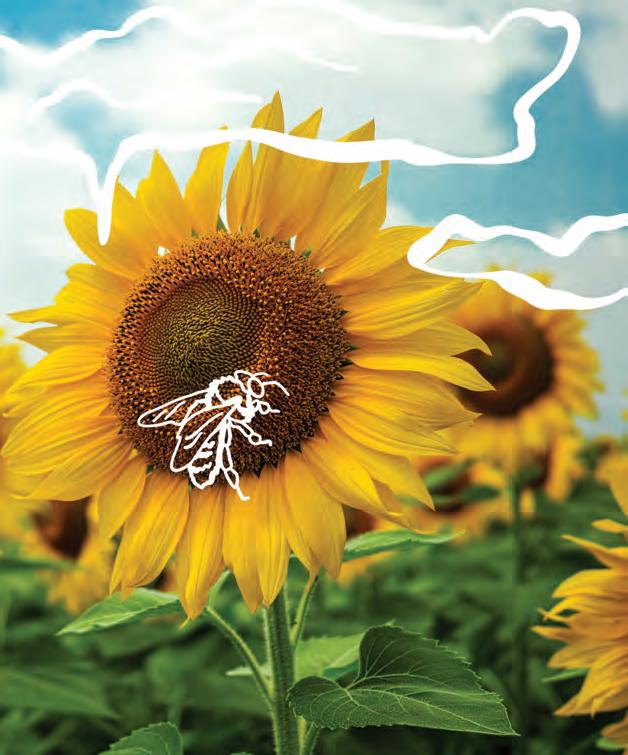
Exceptional performance
Smooth printing surface, 97 brightness and excellent opacity
Sustainably made
Certifications and chain of custody documentation from FSC® and SFI®
Priced right
Up to 25% less than comparable uncoated sheets on the market
With so many sizes, weights and finishes, where you put your Accent is entirely up to you.